- Back to Home »
- Congress, have Obama's back on Syria
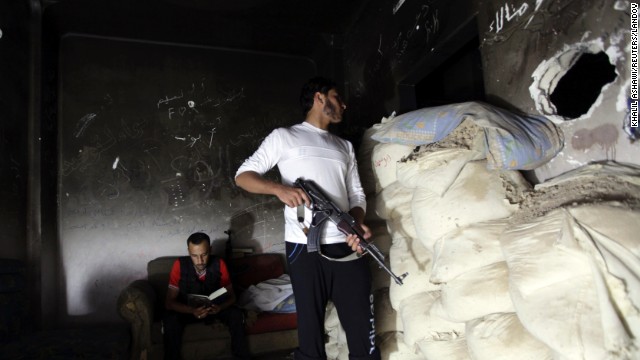 A Free Syrian Army fighter looks through a hole from behind sandbags, while a fellow fighter reads the Quran in Deir Ezzor, Syria, on Tuesday, September 3. The United States and other Western nations blame the Assad regime for a chemical weapons attack that's believed to have killed more than 1,400 people. Tensions in Syria began to flare in March 2011 and escalated into an ongoing civil war. Click through to view the most compelling images taken since the start of the conflict:
A Free Syrian Army fighter looks through a hole from behind sandbags, while a fellow fighter reads the Quran in Deir Ezzor, Syria, on Tuesday, September 3. The United States and other Western nations blame the Assad regime for a chemical weapons attack that's believed to have killed more than 1,400 people. Tensions in Syria began to flare in March 2011 and escalated into an ongoing civil war. Click through to view the most compelling images taken since the start of the conflict: 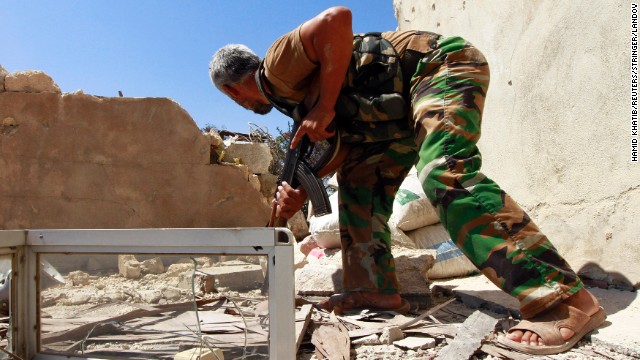 A Free Syrian Army fighter takes cover as he watches forces loyal to President Bashar al-Assad near Hanano barracks in Aleppo on September 3.
A Free Syrian Army fighter takes cover as he watches forces loyal to President Bashar al-Assad near Hanano barracks in Aleppo on September 3. 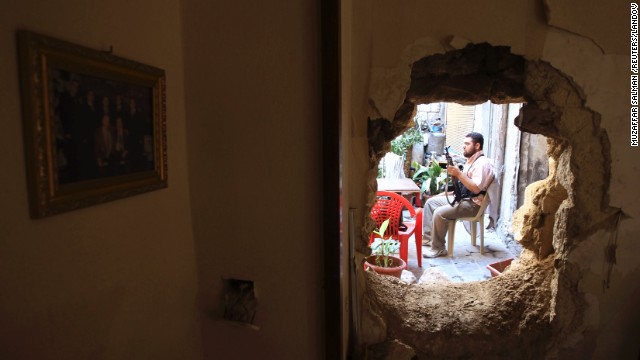 A Free Syrian Army fighter is seen through a hole in a wall of a building in Aleppo on September 3.
A Free Syrian Army fighter is seen through a hole in a wall of a building in Aleppo on September 3. 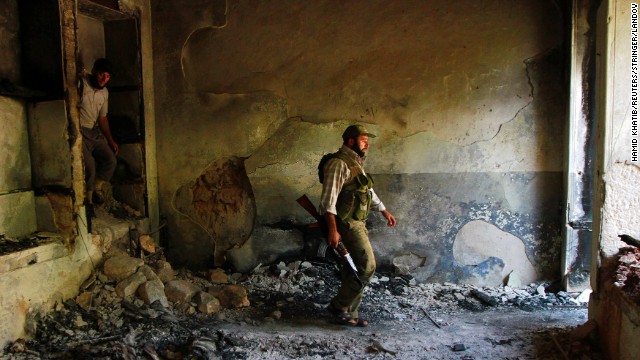 Free Syrian Army fighters walk inside a damaged house in Aleppo on September 3.
Free Syrian Army fighters walk inside a damaged house in Aleppo on September 3. 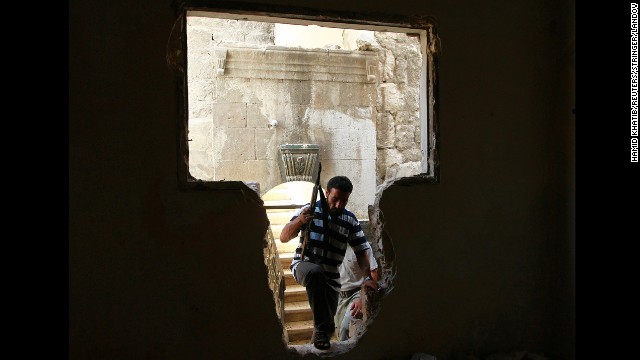 A Free Syrian Army fighter walks through a hole in a wall in Aleppo on September 3.
A Free Syrian Army fighter walks through a hole in a wall in Aleppo on September 3. 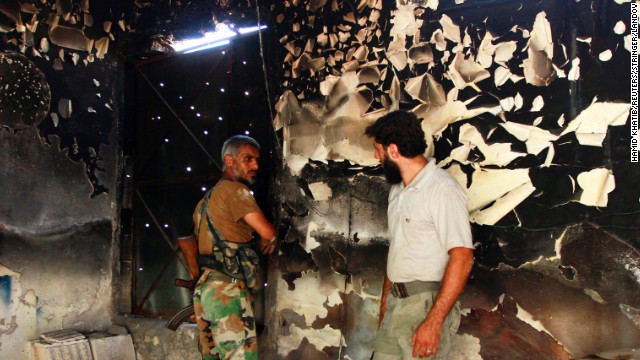 Free Syrian Army fighters talk inside a burnt house in Aleppo on September 3.
Free Syrian Army fighters talk inside a burnt house in Aleppo on September 3. 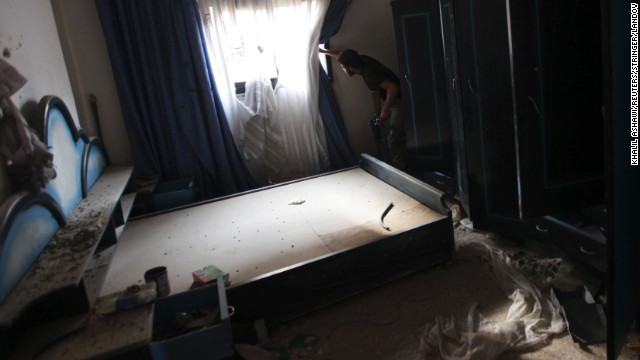 A Free Syrian Army fighter peeks through the curtains of a bedroom in Deir ez-Zor, Syria, on Monday, September 2.
A Free Syrian Army fighter peeks through the curtains of a bedroom in Deir ez-Zor, Syria, on Monday, September 2. 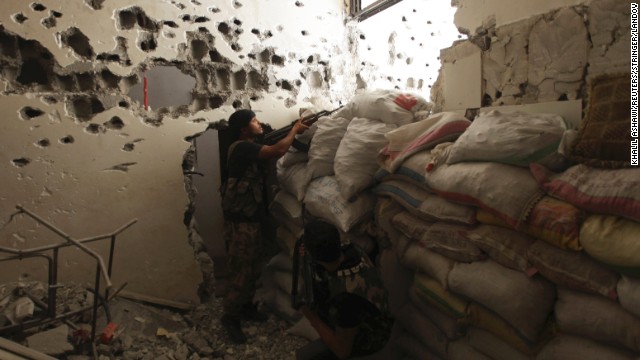 Free Syrian Army fighters take their positions behind piled sandbags, as one of them points his weapon, in Deir ez-Zor on September 2.
Free Syrian Army fighters take their positions behind piled sandbags, as one of them points his weapon, in Deir ez-Zor on September 2. 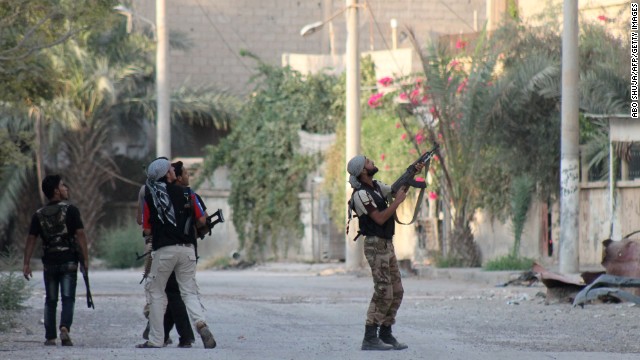 A rebel fighter points his weapon at Syrian regime forces in Deir ez-Zor on September 2.
A rebel fighter points his weapon at Syrian regime forces in Deir ez-Zor on September 2. 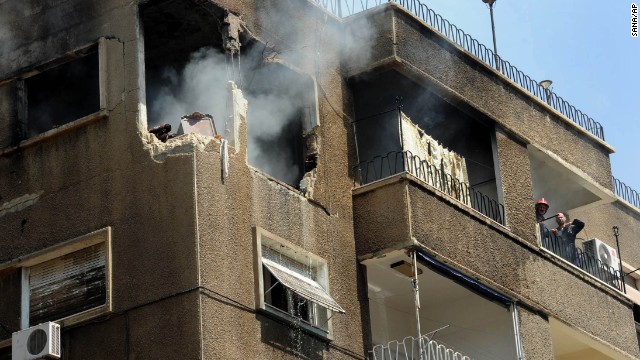 Syrian firefighters try to extinguish a fire after a missile hit a residential building in Damascus, Syria, on September 2.
Syrian firefighters try to extinguish a fire after a missile hit a residential building in Damascus, Syria, on September 2. 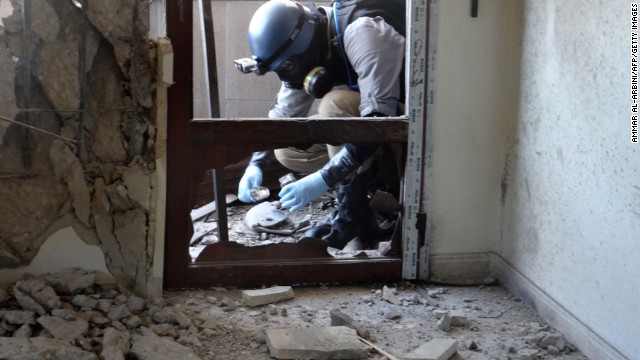 A U.N. arms expert collects samples during an inspection of a suspected chemical weapons strike site in the Ghouta area outside Damascus on August 29.
A U.N. arms expert collects samples during an inspection of a suspected chemical weapons strike site in the Ghouta area outside Damascus on August 29. 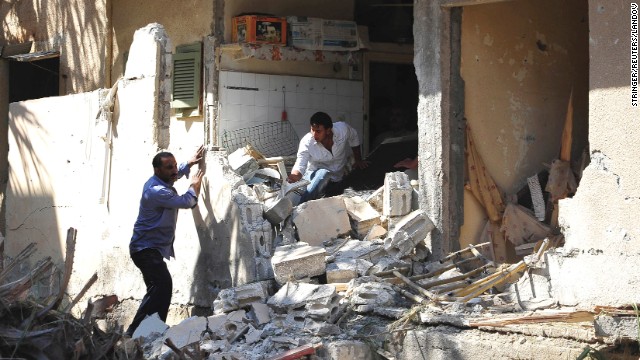 People search for belongings in rubble in Raqqa, Syria, on August 29.
People search for belongings in rubble in Raqqa, Syria, on August 29. 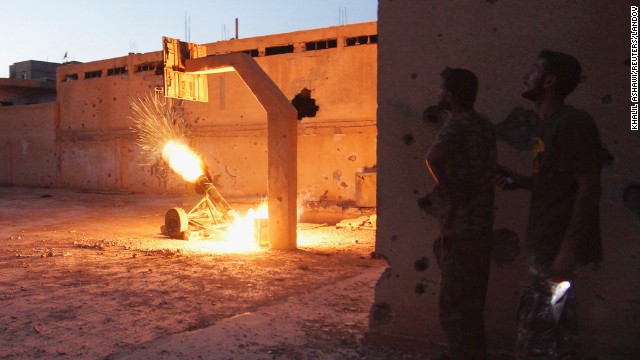 Free Syrian Army fighters launch a rocket toward forces loyal to Syrian President Bashar al-Assad in Deir Ezzor on August 29.
Free Syrian Army fighters launch a rocket toward forces loyal to Syrian President Bashar al-Assad in Deir Ezzor on August 29. 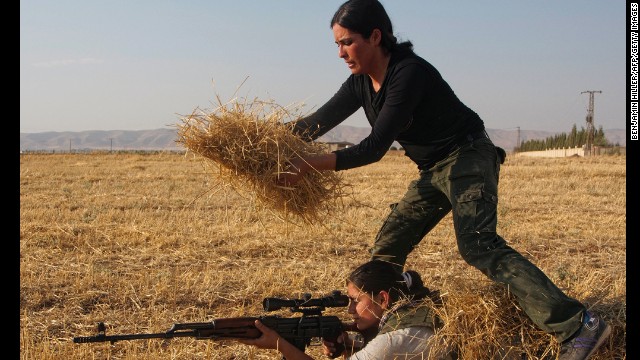 A Syrian Kurd uses hay to hide another woman in a training session organized by the Kurdish Women's Defense Units on Wednesday, August 28, in a northern Syrian border village. They're preparing if the area comes under attack.
A Syrian Kurd uses hay to hide another woman in a training session organized by the Kurdish Women's Defense Units on Wednesday, August 28, in a northern Syrian border village. They're preparing if the area comes under attack.  Free Syrian Army fighters escort U.N. vehicles with chemical weapons experts on August 28 through a site of a suspected chemical weapons attack outside Damascus.
Free Syrian Army fighters escort U.N. vehicles with chemical weapons experts on August 28 through a site of a suspected chemical weapons attack outside Damascus. 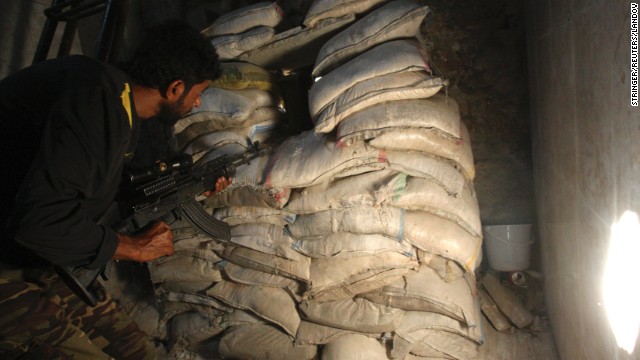 A Free Syrian Army fighter takes position behind sandbags in the old city of Aleppo, Syria, on Tuesday, August 27.
A Free Syrian Army fighter takes position behind sandbags in the old city of Aleppo, Syria, on Tuesday, August 27. 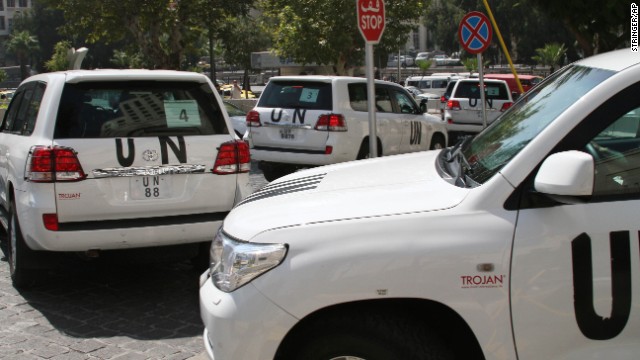 A U.N. team leaves its Damascus, Syria, hotel in a convoy on Monday, August 26. The team was to investigate an alleged chemical attack that killed hundreds last week in a suburb of the Syrian capital. Sniper fire hit a vehicle used by the U.N. chemical weapons investigation team multiple times Monday, according to the United Nations.
A U.N. team leaves its Damascus, Syria, hotel in a convoy on Monday, August 26. The team was to investigate an alleged chemical attack that killed hundreds last week in a suburb of the Syrian capital. Sniper fire hit a vehicle used by the U.N. chemical weapons investigation team multiple times Monday, according to the United Nations. 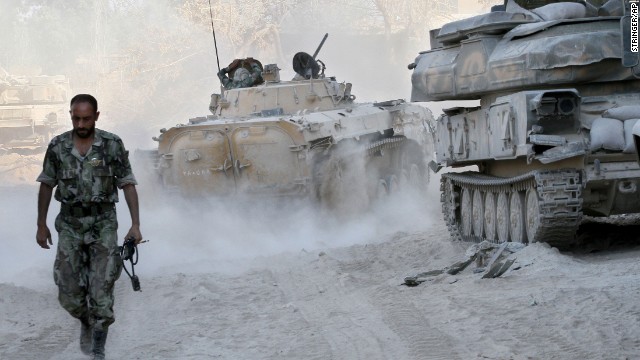 A Syrian soldier walks down a street in Damascus on Saturday, August 24.
A Syrian soldier walks down a street in Damascus on Saturday, August 24. 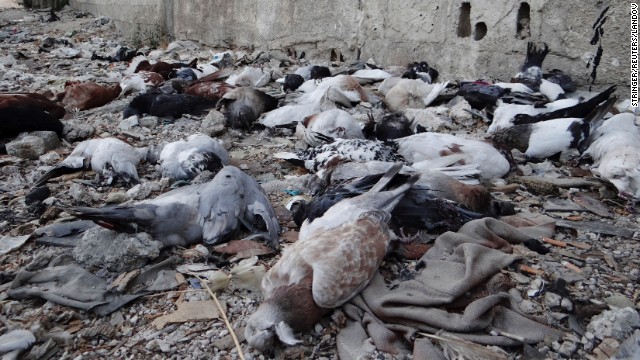 Pigeons lie dead on the ground on August 24 from after what activists say is the use of chemical weapons by government forces in the Damascus suburb of Arbeen.
Pigeons lie dead on the ground on August 24 from after what activists say is the use of chemical weapons by government forces in the Damascus suburb of Arbeen. 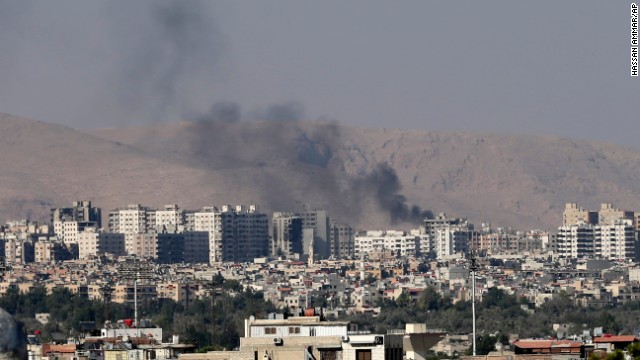 Columns of smoke rise in Barzeh after heavy shelling on Friday, August 23.
Columns of smoke rise in Barzeh after heavy shelling on Friday, August 23. 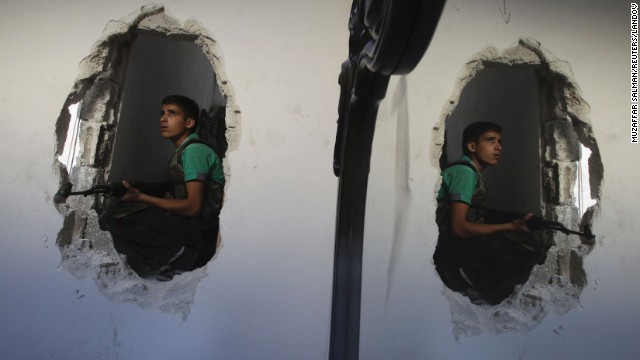 A young Free Syrian Army fighter is reflected in a mirror as he takes position in a house in Aleppo on Thursday, August 22.
A young Free Syrian Army fighter is reflected in a mirror as he takes position in a house in Aleppo on Thursday, August 22. 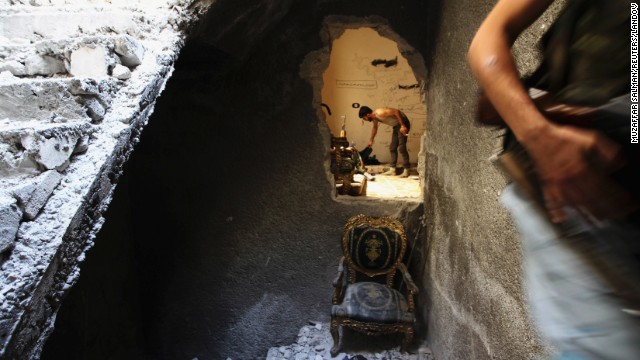 Rebels move around a building in Aleppo on August 22.
Rebels move around a building in Aleppo on August 22. 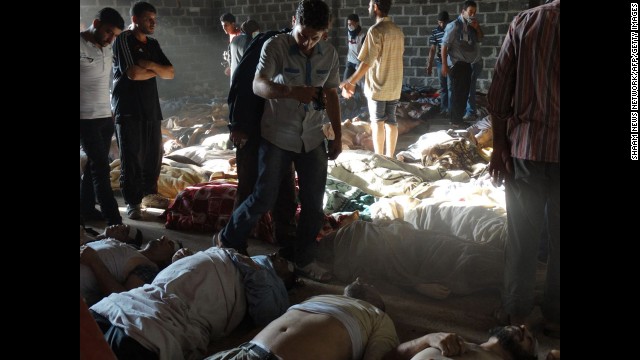 Syrian rebels claim pro-government forces used chemical weapons to kill citizens outside Damascus on Wednesday, August 21. People inspect bodies in this photo released by the Syrian opposition Shaam News Network.
Syrian rebels claim pro-government forces used chemical weapons to kill citizens outside Damascus on Wednesday, August 21. People inspect bodies in this photo released by the Syrian opposition Shaam News Network. 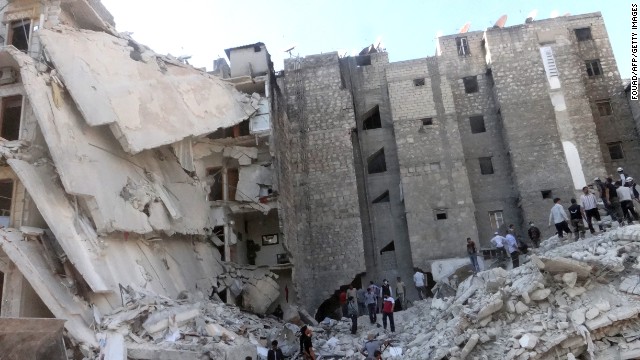 People search the rubble of a bombed building in Aleppo, Syria, on Friday, August 16.
People search the rubble of a bombed building in Aleppo, Syria, on Friday, August 16. 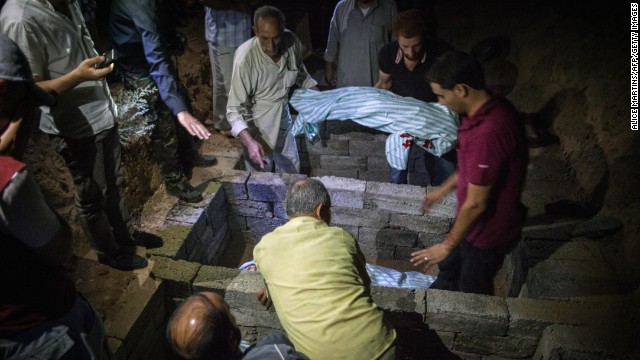 Men bury the bodies of six members of the same family killed in a bombing in Raqqa on Saturday, August 10.
Men bury the bodies of six members of the same family killed in a bombing in Raqqa on Saturday, August 10. 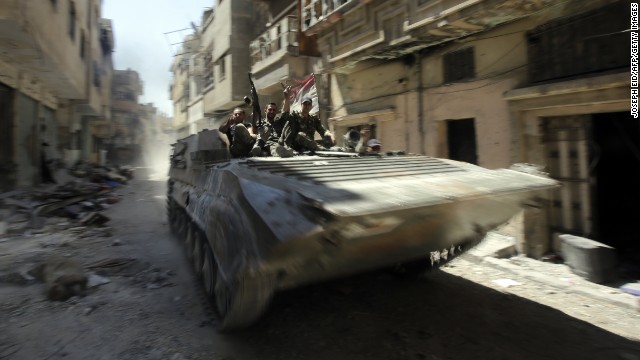 Syrian Army soldiers patrol a devastated street in Homs on Wednesday, July 31.
Syrian Army soldiers patrol a devastated street in Homs on Wednesday, July 31. 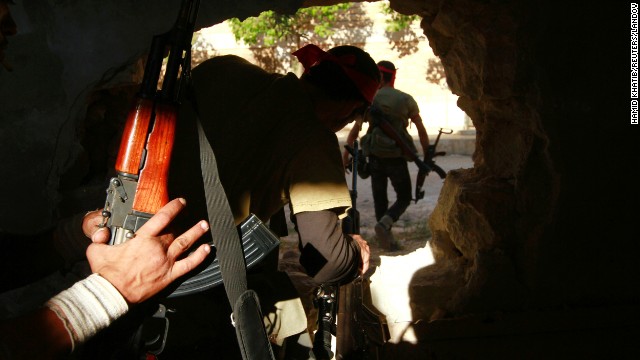 Free Syrian Army fighters move through a hole in a wall in Khan al-Assal on Monday, July 22, after seizing the town.
Free Syrian Army fighters move through a hole in a wall in Khan al-Assal on Monday, July 22, after seizing the town. 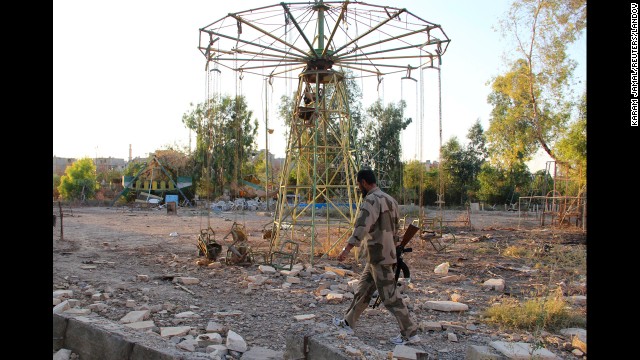 A rebel fighter walks past swings in a deserted playground in Deir al-Zor, Syria, on Sunday, July 21.
A rebel fighter walks past swings in a deserted playground in Deir al-Zor, Syria, on Sunday, July 21. 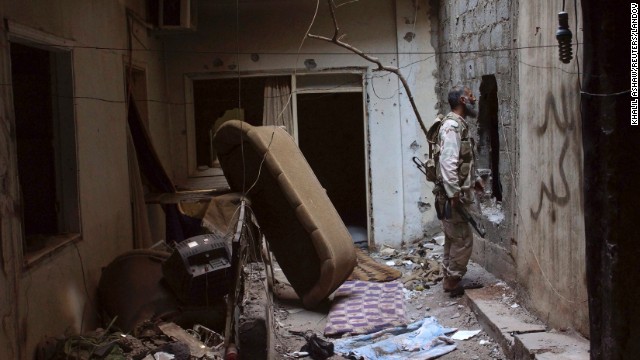 A rebel fighter speaks with a fellow fighter through a hole in a wall in Deir al-Zor on July 21.
A rebel fighter speaks with a fellow fighter through a hole in a wall in Deir al-Zor on July 21. 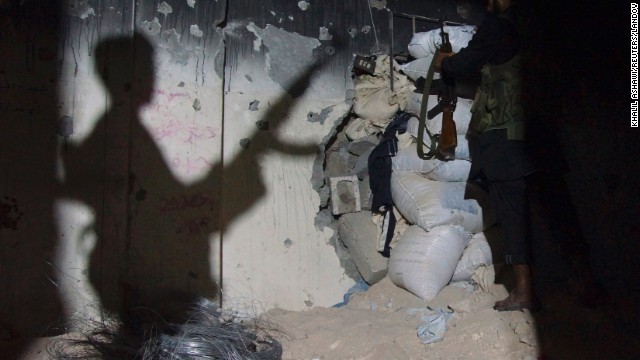 A Free Syrian Army fighter casts a shadow on a wall as he carries his weapon in a shelter in Deir al-Zor on Thursday, July 18.
A Free Syrian Army fighter casts a shadow on a wall as he carries his weapon in a shelter in Deir al-Zor on Thursday, July 18.  Yahya Sweed, 13, is comforted by his father as he lies on a bed in Kfar Nubul on Tuesday, July 16. The boy was injured by shrapnel, resulting in the amputation of his right leg.
Yahya Sweed, 13, is comforted by his father as he lies on a bed in Kfar Nubul on Tuesday, July 16. The boy was injured by shrapnel, resulting in the amputation of his right leg. 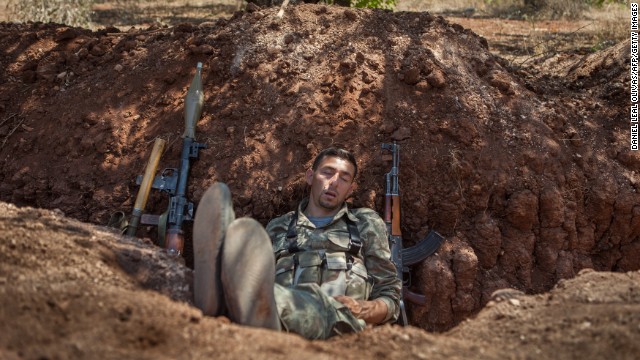 A rebel fighter naps in a trench about 300 feet from the Syrian government forces' positions along the highway connecting Idlib with Latakia on Monday, July 15.
A rebel fighter naps in a trench about 300 feet from the Syrian government forces' positions along the highway connecting Idlib with Latakia on Monday, July 15. 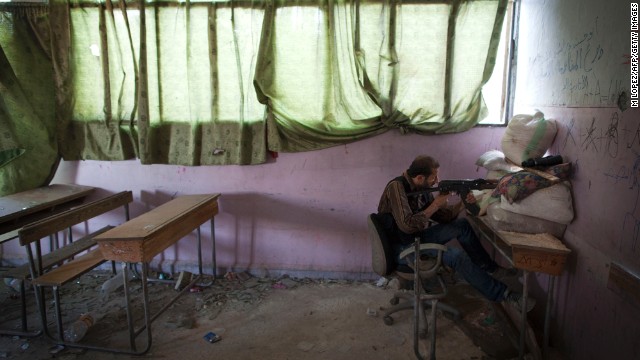 A rebel fighter uses a hole in the wall of a destroyed school to aim at Syrian government forces in the Izaa district of Aleppo on Sunday, July 14.
A rebel fighter uses a hole in the wall of a destroyed school to aim at Syrian government forces in the Izaa district of Aleppo on Sunday, July 14. 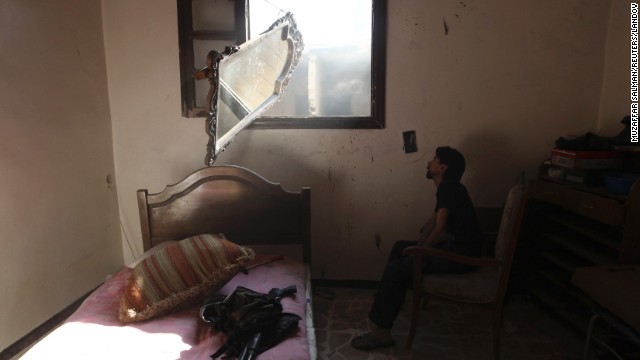 A Free Syrian Army fighter uses a mirror to scope out snipers loyal to Syrian President Bashar al-Assad in Aleppo on Friday, July 12.
A Free Syrian Army fighter uses a mirror to scope out snipers loyal to Syrian President Bashar al-Assad in Aleppo on Friday, July 12. 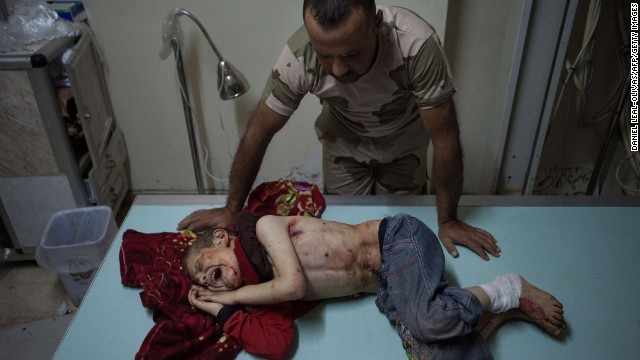 A Free Syrian Army fighter stands over a boy who was injured during shelling in Al-Bara on Monday, July 8.
A Free Syrian Army fighter stands over a boy who was injured during shelling in Al-Bara on Monday, July 8. 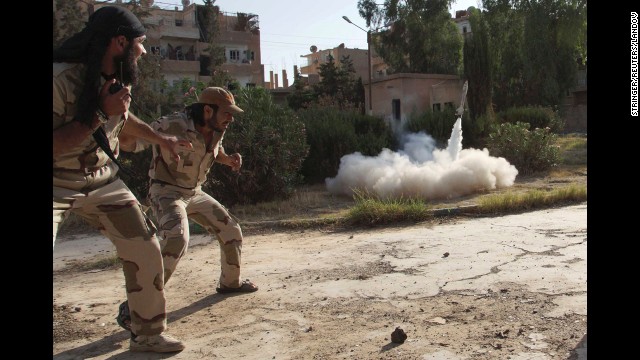 Members of the Free Syrian Army fire a homemade rocket toward regime forces in Deir al-Zor on Sunday, June 16.
Members of the Free Syrian Army fire a homemade rocket toward regime forces in Deir al-Zor on Sunday, June 16. 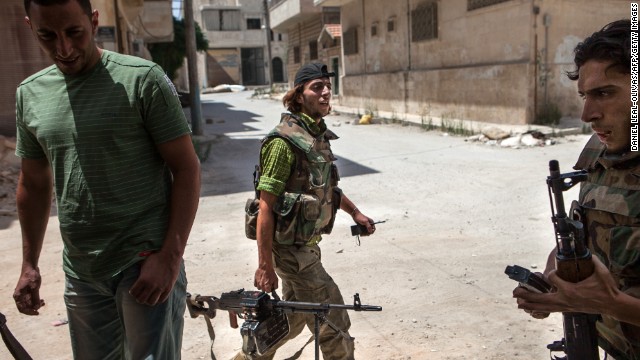 Syrian rebels leave their position in the northwestern town of Maaret al-Numan on Thursday, June 13. The White House said that the Syrian government has crossed a "red line" with its use of chemical weapons and announced it would start arming the rebels.
Syrian rebels leave their position in the northwestern town of Maaret al-Numan on Thursday, June 13. The White House said that the Syrian government has crossed a "red line" with its use of chemical weapons and announced it would start arming the rebels. 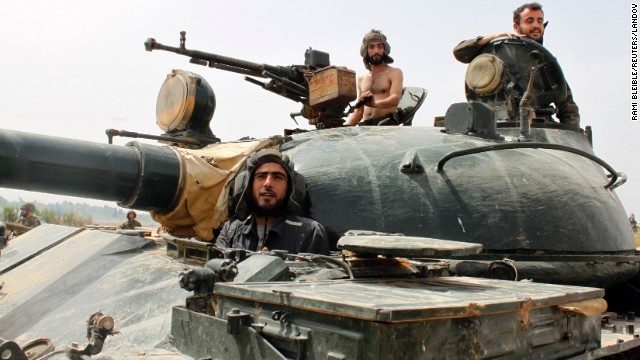 Forces loyal to Syrian President Bashar al-Assad are seen near Qusayr on Thursday, May 30.
Forces loyal to Syrian President Bashar al-Assad are seen near Qusayr on Thursday, May 30.  Syrian rebels take position in a house during clashes with regime forces in the old city of Aleppo on May 22.
Syrian rebels take position in a house during clashes with regime forces in the old city of Aleppo on May 22. 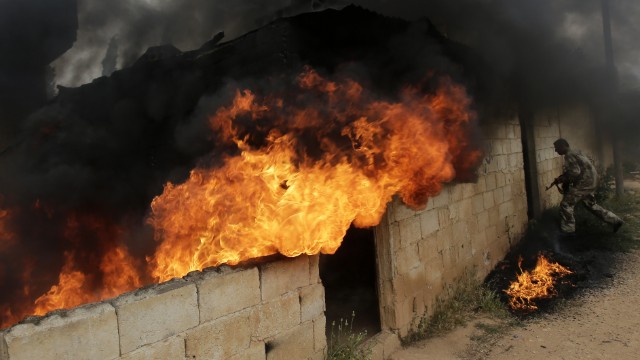 Syrian army soldiers take control of the village of Western Dumayna north of the rebel-held city of Qusayr on Monday, May 13. Syrian troops captured three villages in Homs province, allowing them to cut supply lines to rebels inside Qusayr town, a military officer told AFP.
Syrian army soldiers take control of the village of Western Dumayna north of the rebel-held city of Qusayr on Monday, May 13. Syrian troops captured three villages in Homs province, allowing them to cut supply lines to rebels inside Qusayr town, a military officer told AFP. 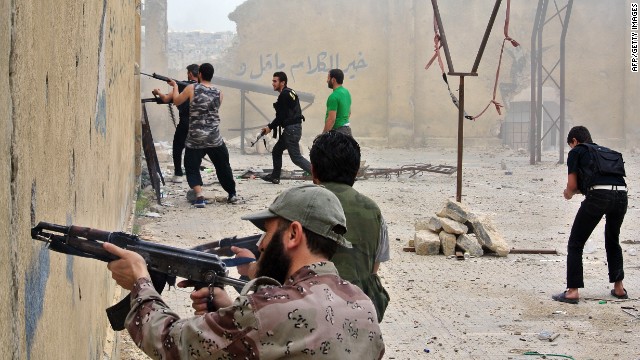 Rebel fighters fire at government forces in the northern Syrian city of Aleppo on Sunday, May 12.
Rebel fighters fire at government forces in the northern Syrian city of Aleppo on Sunday, May 12. 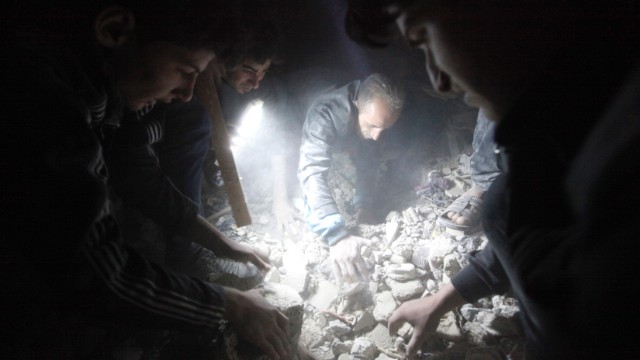 Searchers use a flashlight as they look for survivors among the rubble created by what activists say was a missile attack from the Syrian regime, in Raqqa province, Syria, on April 25.
Searchers use a flashlight as they look for survivors among the rubble created by what activists say was a missile attack from the Syrian regime, in Raqqa province, Syria, on April 25. 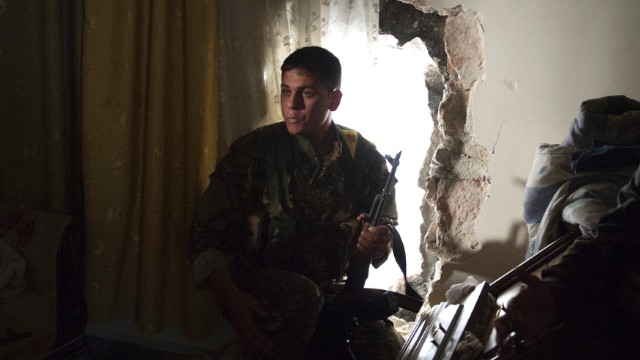 A Kurdish fighter from the "Popular Protection Units" (YPG) takes position inside a building in the majority-Kurdish Sheikh Maqsood area of Aleppo, on Apri. 21.
A Kurdish fighter from the "Popular Protection Units" (YPG) takes position inside a building in the majority-Kurdish Sheikh Maqsood area of Aleppo, on Apri. 21. 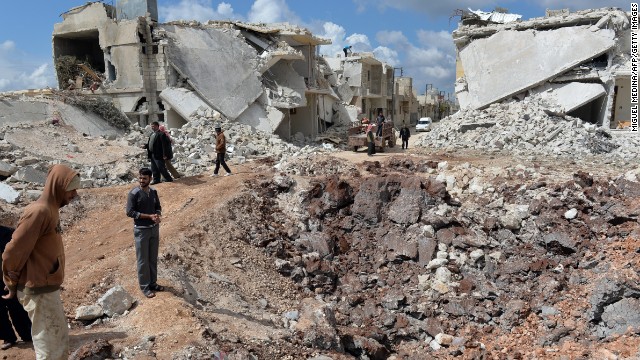 People walk past destroyed houses in the northern Syrian town of Azaz on Sunday, April 21.
People walk past destroyed houses in the northern Syrian town of Azaz on Sunday, April 21. 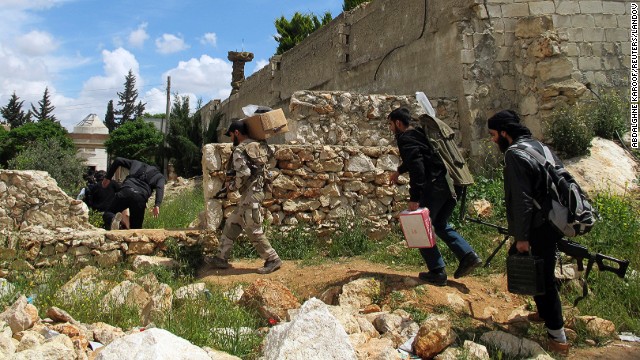 Free Syrian Army fighters take positions prior to an offensive against government forces in the Khan al-Assal area, near Aleppo on Saturday, April 20.
Free Syrian Army fighters take positions prior to an offensive against government forces in the Khan al-Assal area, near Aleppo on Saturday, April 20. 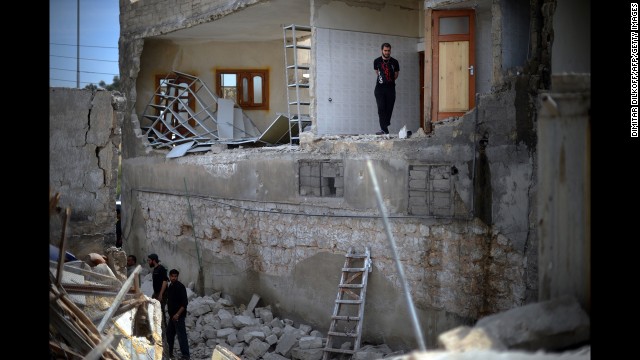 Men inspect damage at a house destroyed in an airstrike in Aleppo on April 15.
Men inspect damage at a house destroyed in an airstrike in Aleppo on April 15. 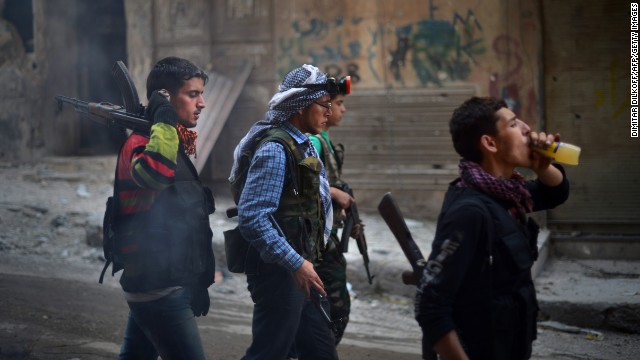 Syrian and Kurdish rebel fighters walk in the Sheikh Maqsud district of Aleppo on April 14.
Syrian and Kurdish rebel fighters walk in the Sheikh Maqsud district of Aleppo on April 14. 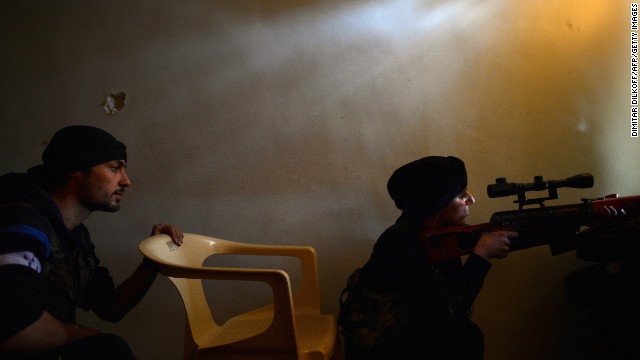 A female rebel monitors the movement of Syrian government forces in Aleppo's Sheikh Maqsud neighborhood on Thursday, April 11.
A female rebel monitors the movement of Syrian government forces in Aleppo's Sheikh Maqsud neighborhood on Thursday, April 11. 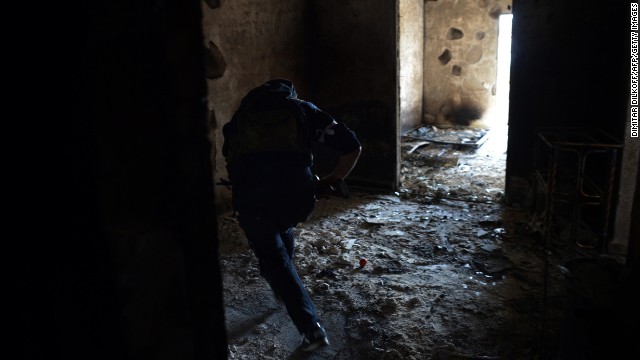 A rebel runs to avoid sniper fire from Syrian government forces in Aleppo on April 11.
A rebel runs to avoid sniper fire from Syrian government forces in Aleppo on April 11.  Syrian rebels observe the movement of Syrian government forces around Al-Kendi hospital in Aleppo on Wednesday, April 10.
Syrian rebels observe the movement of Syrian government forces around Al-Kendi hospital in Aleppo on Wednesday, April 10. 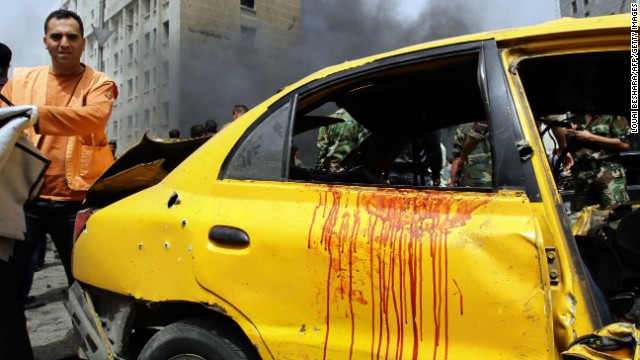 Rescue teams and security forces check out the scene of a deadly car bomb explosion in Damascus on April 8.
Rescue teams and security forces check out the scene of a deadly car bomb explosion in Damascus on April 8. 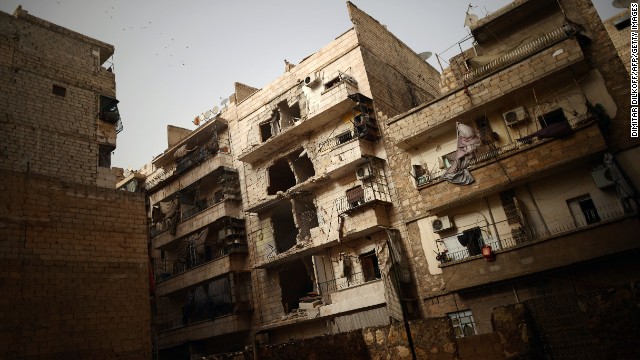 The fighting has taken a toll on buildings in Aleppo's Saladin district, seen here on April 8.
The fighting has taken a toll on buildings in Aleppo's Saladin district, seen here on April 8. 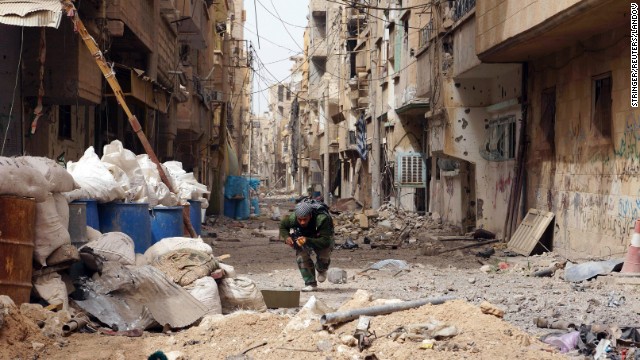 A Syrian rebel runs for cover in Deir ez-Zor on April 2.
A Syrian rebel runs for cover in Deir ez-Zor on April 2. 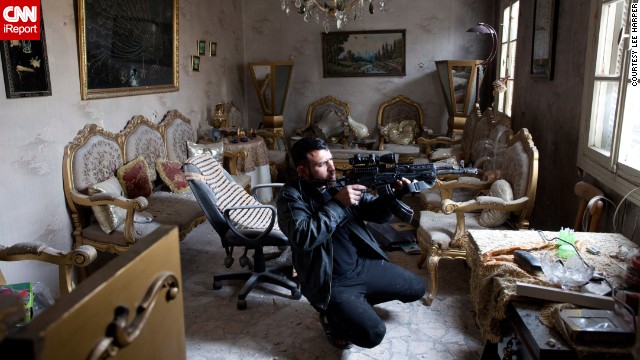 A rebel checks for snipers across the street toward the Citadel in Aleppo, Syria, on Saturday, March 30, in this photo taken by iReporter Lee Harper.
A rebel checks for snipers across the street toward the Citadel in Aleppo, Syria, on Saturday, March 30, in this photo taken by iReporter Lee Harper. 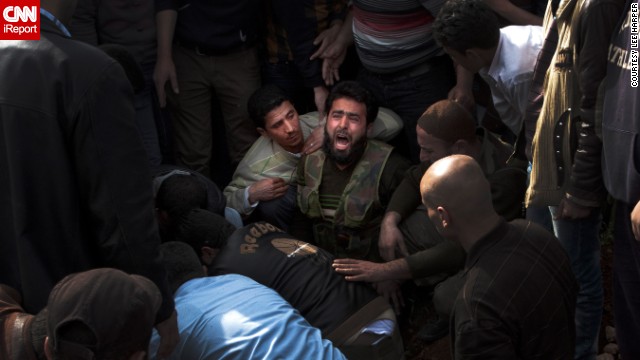 A Free Syrian fighter mourns the death of a friend in Aleppo on March 30, in this photo taken by iReporter Lee Harper.
A Free Syrian fighter mourns the death of a friend in Aleppo on March 30, in this photo taken by iReporter Lee Harper. 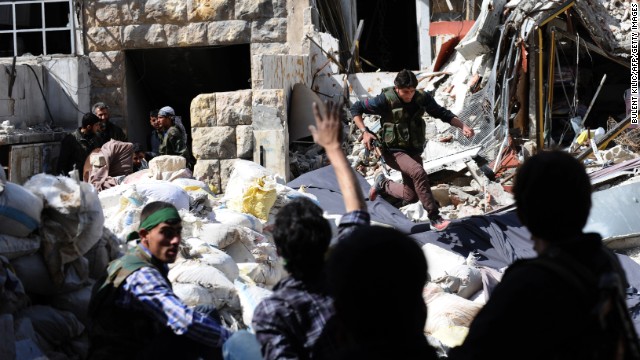 A Syrian opposition fighter runs for cover from Syrian army snipers in Aleppo on Wednesday, March 27.
A Syrian opposition fighter runs for cover from Syrian army snipers in Aleppo on Wednesday, March 27. 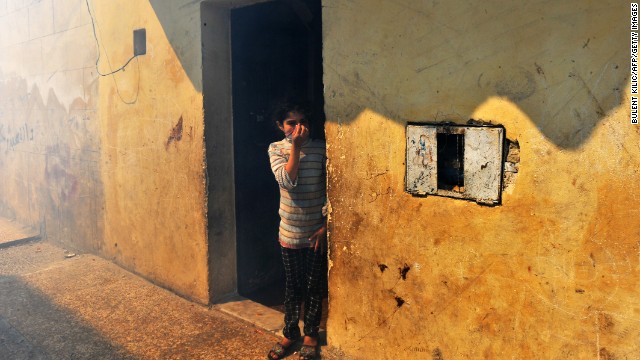 A Syrian girl covers her face to protect herself from fumes as a street covered with uncollected garbage is fumigated in Aleppo on Sunday, March 24.
A Syrian girl covers her face to protect herself from fumes as a street covered with uncollected garbage is fumigated in Aleppo on Sunday, March 24. 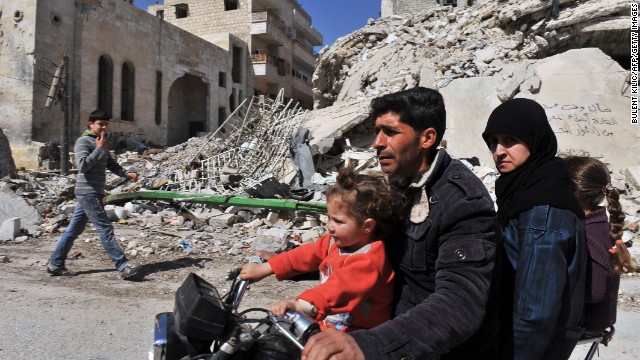 A Syrian man and his family drive past damaged buildings in Maarat al-Numan, on Wednesday, March 20.
A Syrian man and his family drive past damaged buildings in Maarat al-Numan, on Wednesday, March 20. 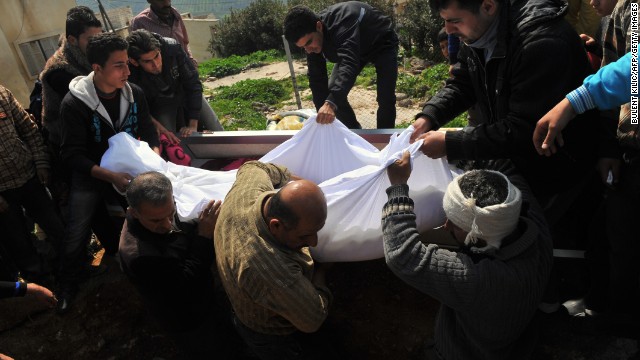 Syrians carry the body of a Syrian army soldier during a funeral ceremony in Idlib province on Tuesday, March 19.
Syrians carry the body of a Syrian army soldier during a funeral ceremony in Idlib province on Tuesday, March 19. 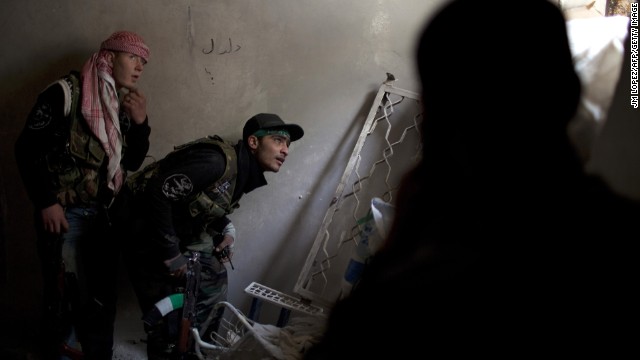 Syrian rebels take position in Aleppo, the largest city in the country, on March 11.
Syrian rebels take position in Aleppo, the largest city in the country, on March 11. 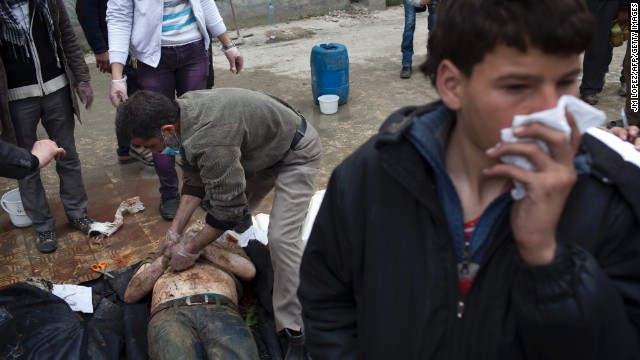 Syrian men search for their relatives amongst the bodies of civilians executed and dumped in the Quweiq River on March 11.
Syrian men search for their relatives amongst the bodies of civilians executed and dumped in the Quweiq River on March 11. 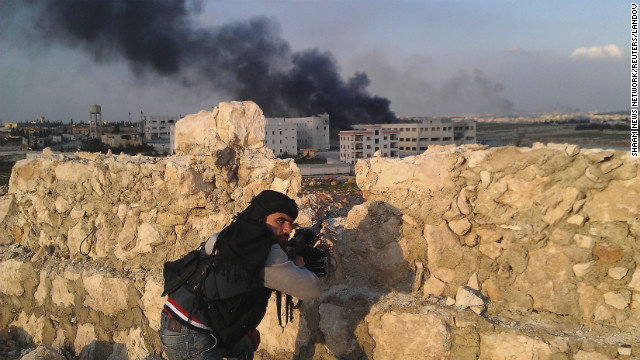 A Free Syrian Army fighter looks back as smoke rises during fighting between rebel fighters and forces loyal to Syria's President Bashar al-Assad on the outskirts of Aleppo on Saturday, March 2.
A Free Syrian Army fighter looks back as smoke rises during fighting between rebel fighters and forces loyal to Syria's President Bashar al-Assad on the outskirts of Aleppo on Saturday, March 2. 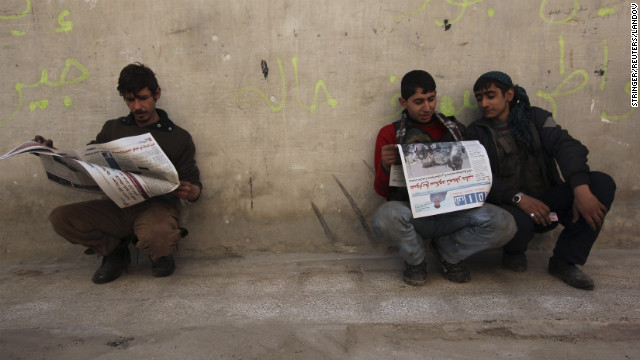 Residents read Shaam News newspapers published by the Free Syrian Army in Aleppo on March 2.
Residents read Shaam News newspapers published by the Free Syrian Army in Aleppo on March 2. 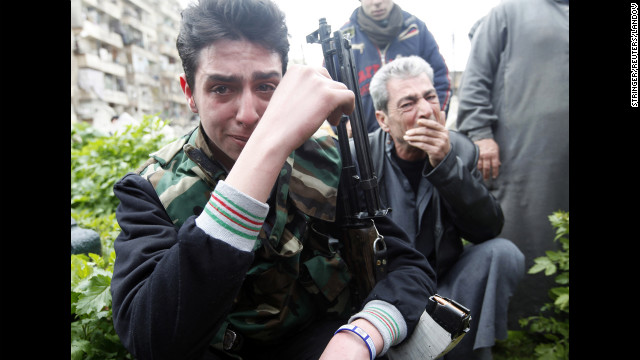 A member of the Free Syrian Army reacts to the death of a comrade who was killed in fighting, at Bustan al Qasr cemetery in Aleppo on Friday, March 1.
A member of the Free Syrian Army reacts to the death of a comrade who was killed in fighting, at Bustan al Qasr cemetery in Aleppo on Friday, March 1. 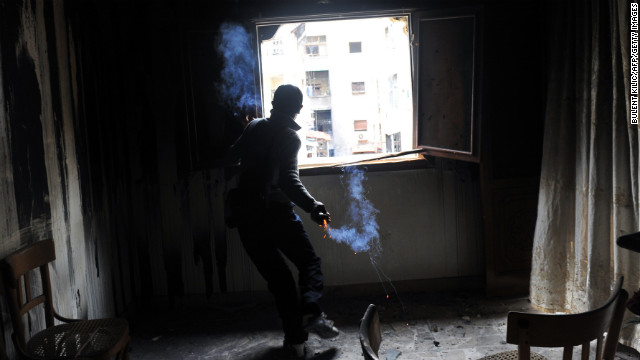 A rebel fighter throws a home-made grenade at Syrian government forces in Aleppo on February 16.
A rebel fighter throws a home-made grenade at Syrian government forces in Aleppo on February 16. 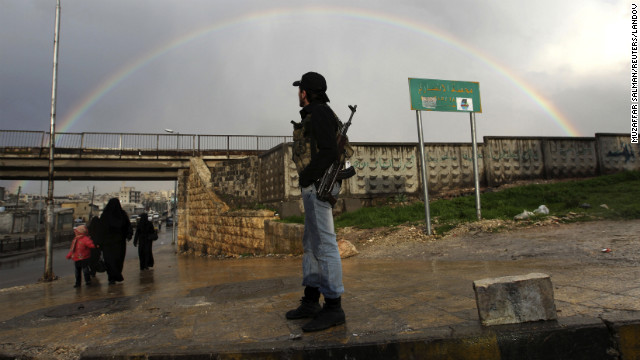 A member of the Free Syrian Army stands with his weapon as he looks at a rainbow in Aleppo on February 16.
A member of the Free Syrian Army stands with his weapon as he looks at a rainbow in Aleppo on February 16. 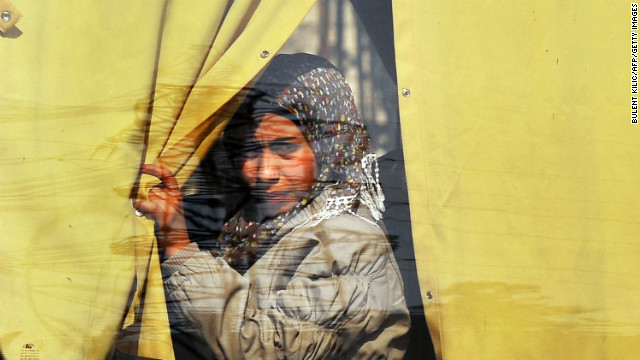 A Syrian woman looks through a bus window in Aleppo on February 14.
A Syrian woman looks through a bus window in Aleppo on February 14. 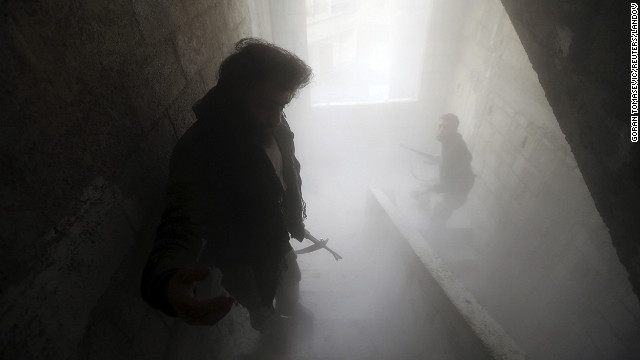 Free Syrian Army fighters walk through a dust-filled stairwell in Damascus on February 7.
Free Syrian Army fighters walk through a dust-filled stairwell in Damascus on February 7. 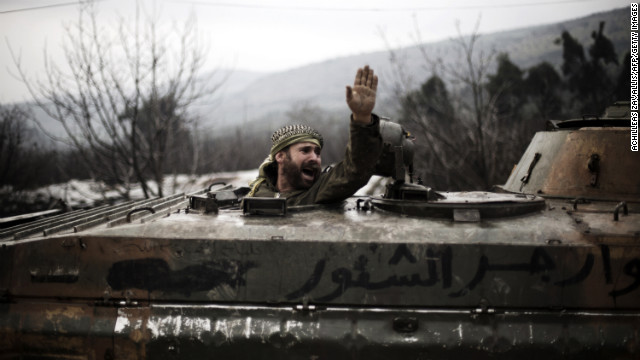 A Syrian rebel gestures at comrades from inside a broken armored personnel carrier in Al-Yaqubia on February 6.
A Syrian rebel gestures at comrades from inside a broken armored personnel carrier in Al-Yaqubia on February 6. 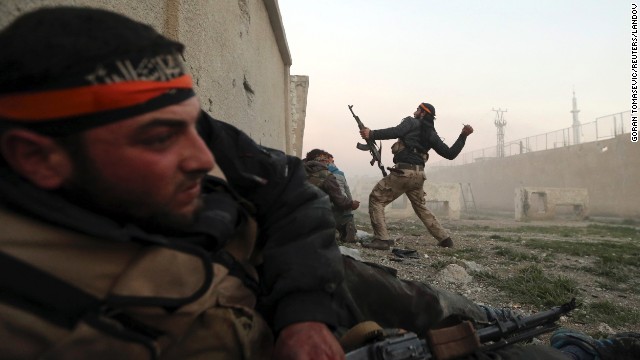 A rebel fighter throws a hand grenade inside a Syrian Army base in Damascus on February 3.
A rebel fighter throws a hand grenade inside a Syrian Army base in Damascus on February 3. 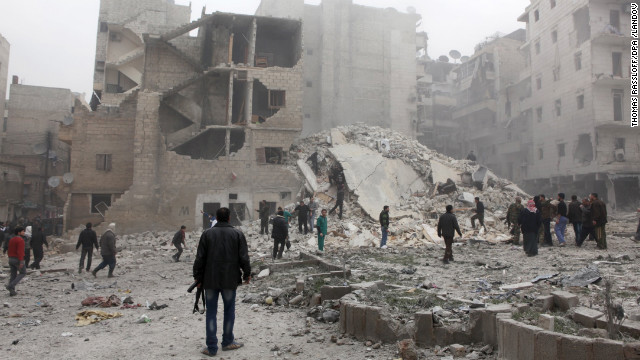 People stand in the dust of a building destroyed in an airstrike in Aleppo, Syria on February 3.
People stand in the dust of a building destroyed in an airstrike in Aleppo, Syria on February 3. 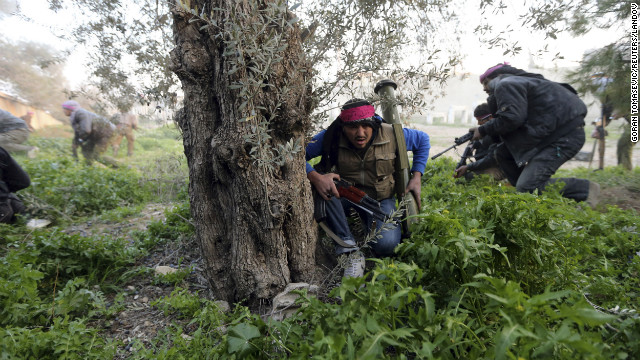 Free Syrian Army fighters run as they enter a Syrian Army base during heavy fighting in the Arabeen neighborhood of Damascus on February 3.
Free Syrian Army fighters run as they enter a Syrian Army base during heavy fighting in the Arabeen neighborhood of Damascus on February 3. 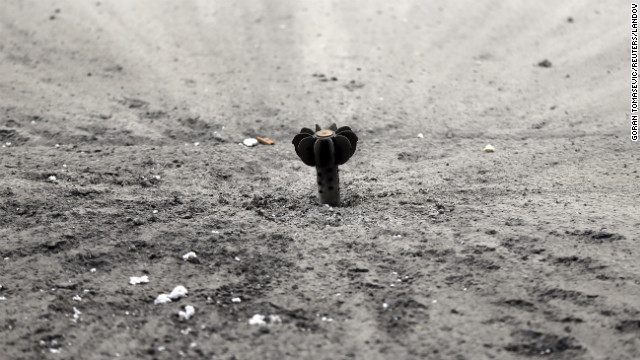 An unexploded mortar shell fired by the Syrian Army sits lodged in the ground in Damascus on January 25.
An unexploded mortar shell fired by the Syrian Army sits lodged in the ground in Damascus on January 25. 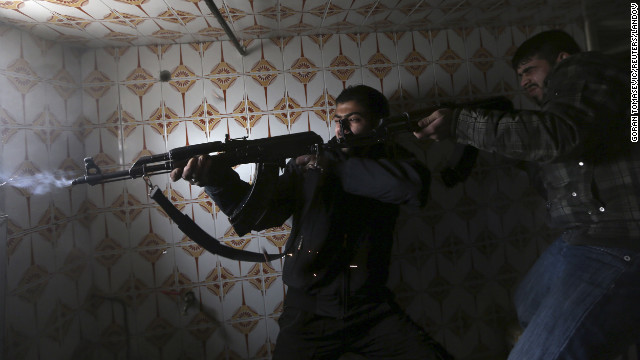 Fighters from Fateh al Sham unit of the Free Syrian Army fire on Syrian Army soldiers at a check point in Damascus on January 20.
Fighters from Fateh al Sham unit of the Free Syrian Army fire on Syrian Army soldiers at a check point in Damascus on January 20. 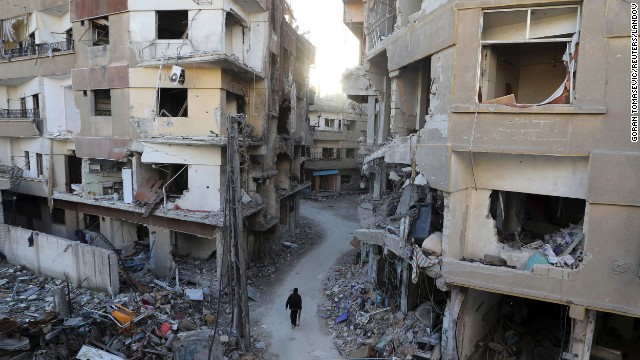 A Free Syrian Army fighter walks between buildings damaged during Syrian Air Force strikes in Damascus on January 19.
A Free Syrian Army fighter walks between buildings damaged during Syrian Air Force strikes in Damascus on January 19. 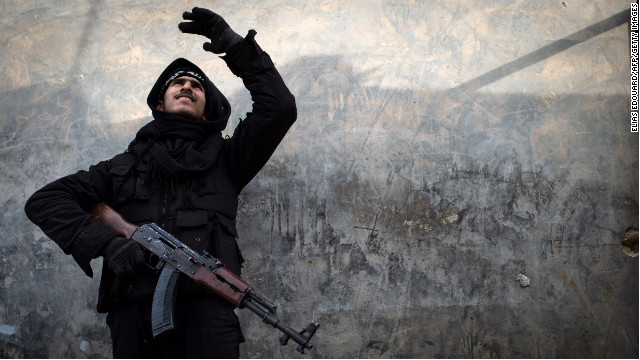 A Syrian rebel fighter tries to locate a government jet fighter in Aleppo on January 18.
A Syrian rebel fighter tries to locate a government jet fighter in Aleppo on January 18. 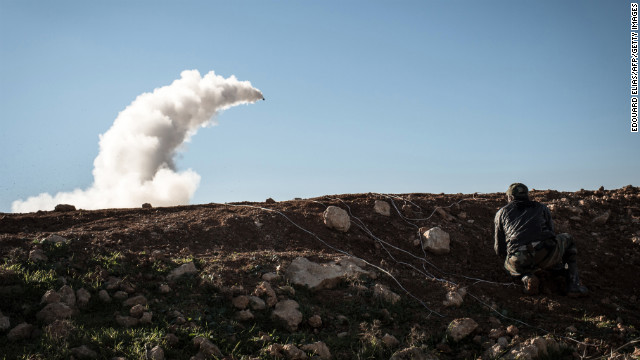 Syrian rebels launch a missile near the Abu Baker brigade in Albab on January 16.
Syrian rebels launch a missile near the Abu Baker brigade in Albab on January 16. 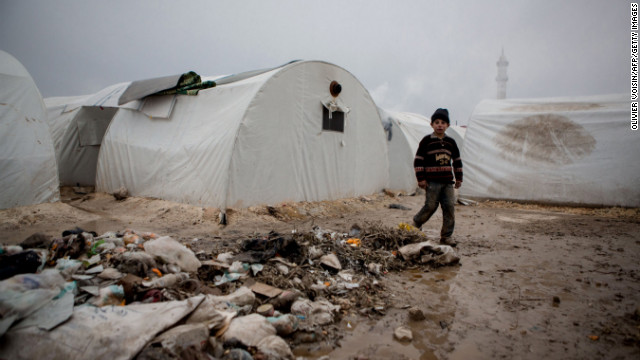 A Syrian boy walks near rubbish next to tents at a refugee camp near the northern city of Azaz on the Syria-Turkey border, on January 8.
A Syrian boy walks near rubbish next to tents at a refugee camp near the northern city of Azaz on the Syria-Turkey border, on January 8. 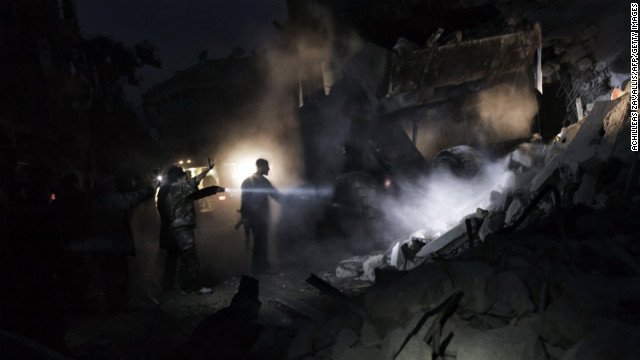 Syrians look for survivors amid the rubble of a building targeted by a missile in Aleppo on January 7.
Syrians look for survivors amid the rubble of a building targeted by a missile in Aleppo on January 7. 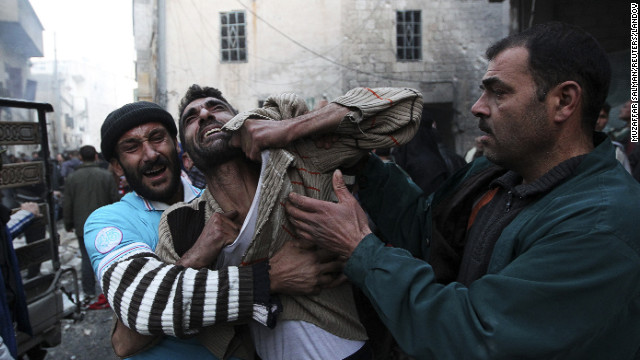 A father reacts after hearing of a shelling by forces loyal to Syria's President Bashar al-Assad in Aleppo on January 3.
A father reacts after hearing of a shelling by forces loyal to Syria's President Bashar al-Assad in Aleppo on January 3.  A patient smokes a cigarette at Dar Al-Ajaza psychiatric hospital in Aleppo on December 18, 2012. The psychiatric ward, housing around 60 patients, has lacked the means to function properly since fighting broke out there in July.
A patient smokes a cigarette at Dar Al-Ajaza psychiatric hospital in Aleppo on December 18, 2012. The psychiatric ward, housing around 60 patients, has lacked the means to function properly since fighting broke out there in July. 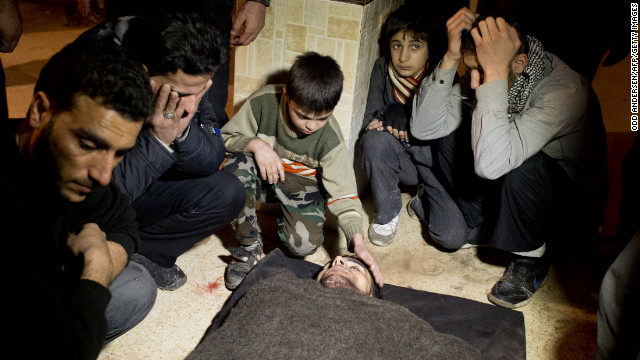 Syrians mourn a fallen rebel fighter at a rebel base in the al-Fardos area of Aleppo on December 8.
Syrians mourn a fallen rebel fighter at a rebel base in the al-Fardos area of Aleppo on December 8.  Members of Liwa (Brigade) Salahadin, a Kurdish military unit fighting alongside rebel fighters, monitor the area in the besieged district of Karmel al-Jabl in Aleppo on December 6.
Members of Liwa (Brigade) Salahadin, a Kurdish military unit fighting alongside rebel fighters, monitor the area in the besieged district of Karmel al-Jabl in Aleppo on December 6. 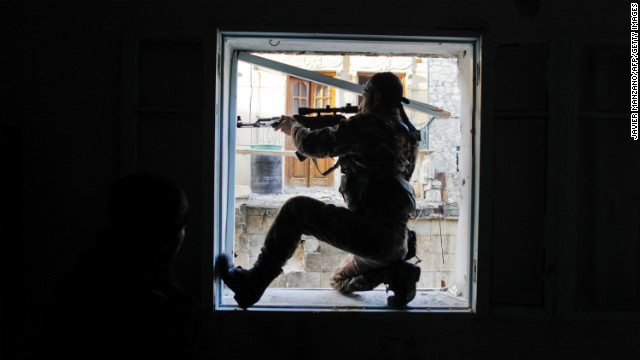 A member of Liwa Salahadin aims at a regime fighter in the besieged district of Karmel al-Jabl in Aleppo on December 6.
A member of Liwa Salahadin aims at a regime fighter in the besieged district of Karmel al-Jabl in Aleppo on December 6. 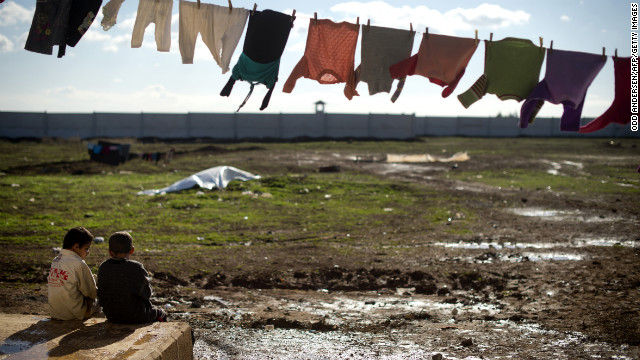 Two young boys sit underneath a washline in a refugee camp on the border between Syria and Turkey near Azaz on December 5.
Two young boys sit underneath a washline in a refugee camp on the border between Syria and Turkey near Azaz on December 5. 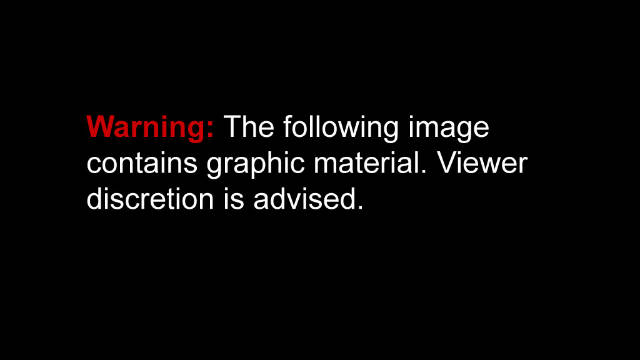
 The bodies of three children, who were allegedly killed in a mortar shell attack that landed close to a bakery in Aleppo, on December 2, are laid out for identification by family members at a makeshift hospital at an undisclosed location of the city.
The bodies of three children, who were allegedly killed in a mortar shell attack that landed close to a bakery in Aleppo, on December 2, are laid out for identification by family members at a makeshift hospital at an undisclosed location of the city. 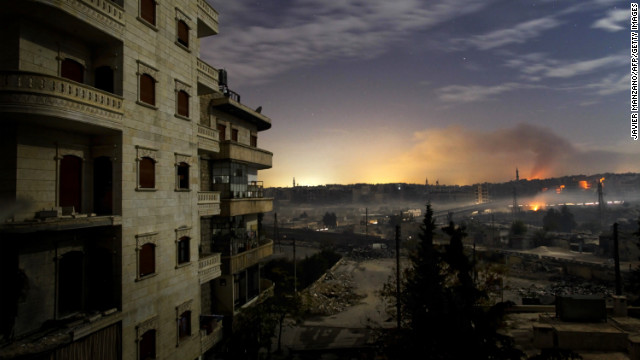 Smoke rises in the Hanano and Bustan al-Basha districts in Aleppo on December 1 as fighting continues through the night.
Smoke rises in the Hanano and Bustan al-Basha districts in Aleppo on December 1 as fighting continues through the night. 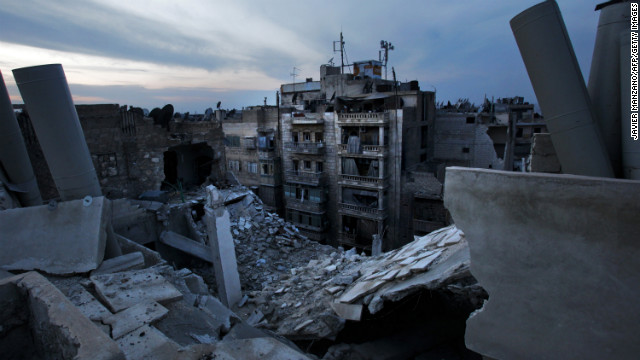 Damaged houses in Aleppo are seen after an airstrike on November 29.
Damaged houses in Aleppo are seen after an airstrike on November 29. 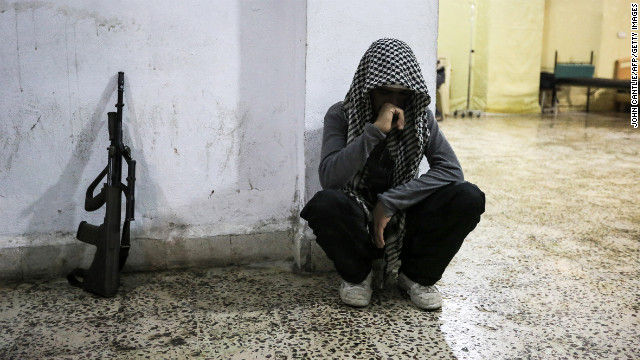 A Syrian rebel mourns the death of a comrade in Maraat al-Numan on November 20.
A Syrian rebel mourns the death of a comrade in Maraat al-Numan on November 20. 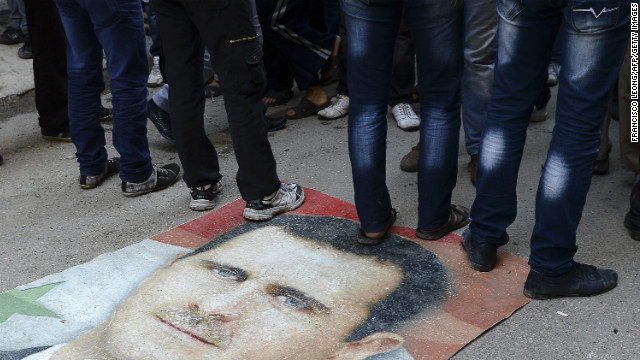 Syrians protesters stand on Assad's portrait during an anti-regime demonstration in Aleppo on November 16.
Syrians protesters stand on Assad's portrait during an anti-regime demonstration in Aleppo on November 16. 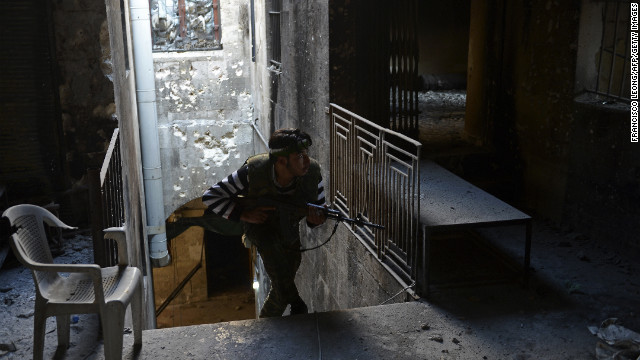 A Syrian rebel takes cover during fighting against Syrian government forces in Aleppo on November 15.
A Syrian rebel takes cover during fighting against Syrian government forces in Aleppo on November 15. 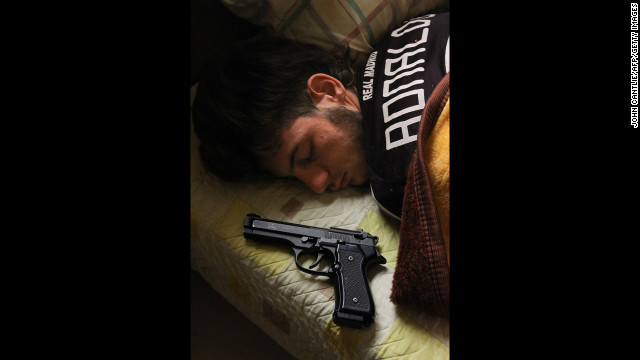 Syrian opposition fighter Bazel Araj, 19, sleeps next to his pistol in Aleppo on November 11.
Syrian opposition fighter Bazel Araj, 19, sleeps next to his pistol in Aleppo on November 11. 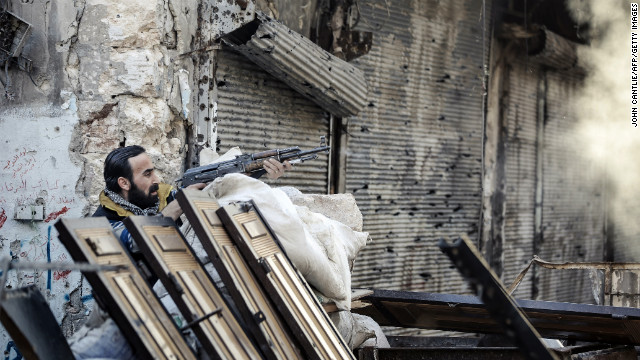 A rebel fighter fires at a Syrian government position in Aleppo on November 6.
A rebel fighter fires at a Syrian government position in Aleppo on November 6.  A Syrian rebel leaps over debris left in the street while running across a "sniper alley" near the Salahudeen district in Aleppo on November 4.
A Syrian rebel leaps over debris left in the street while running across a "sniper alley" near the Salahudeen district in Aleppo on November 4. 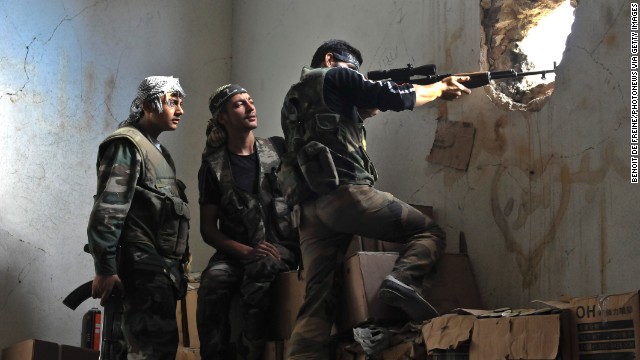 Rebels hold their position in the midst of a battle on November 3 in Aleppo.
Rebels hold their position in the midst of a battle on November 3 in Aleppo. 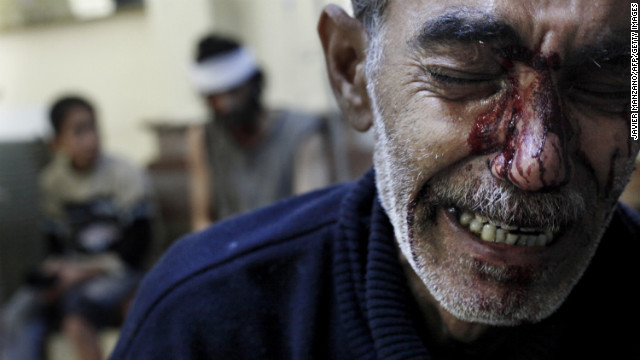 A man cries while being treated in a local hospital in a rebel-controlled area of Aleppo on October 31.
A man cries while being treated in a local hospital in a rebel-controlled area of Aleppo on October 31. 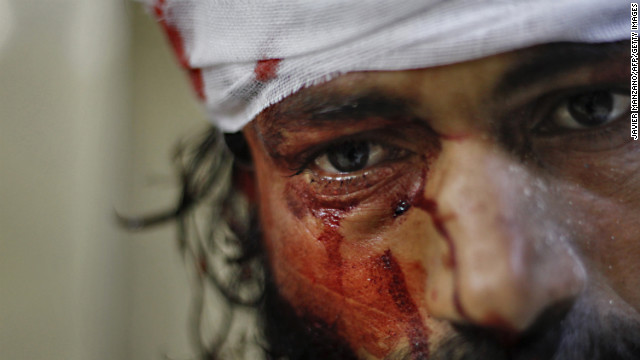 A man is treated for wounds after a government jet attacked the Karm al-Aser neighborhood in eastern Aleppo on October 31.
A man is treated for wounds after a government jet attacked the Karm al-Aser neighborhood in eastern Aleppo on October 31. 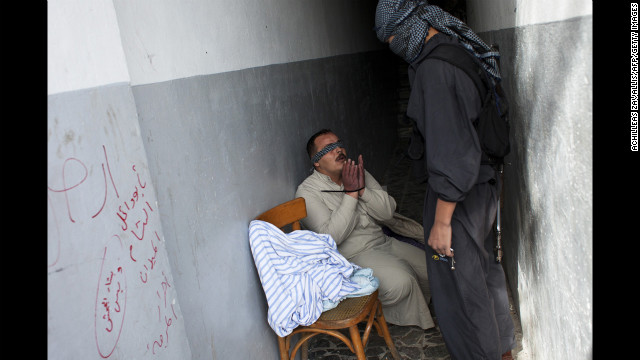 A Syrian rebel interrogates a handcuffed and blindfolded man suspected of being a pro-regime militiaman in Aleppo on October 26.
A Syrian rebel interrogates a handcuffed and blindfolded man suspected of being a pro-regime militiaman in Aleppo on October 26. 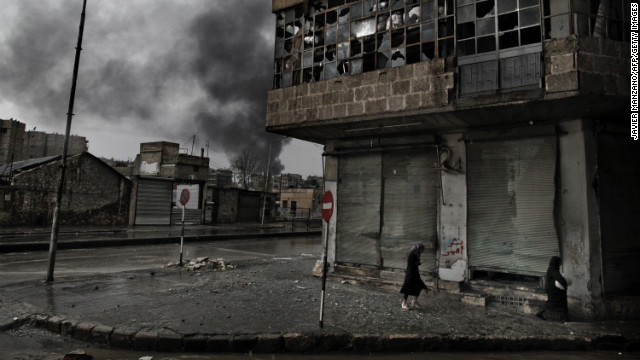 Smoke rises from a fuel station following a mortar attack as Syrian women walk on a rainy day in the Arqub neighborhood of Aleppo on October 25.
Smoke rises from a fuel station following a mortar attack as Syrian women walk on a rainy day in the Arqub neighborhood of Aleppo on October 25. 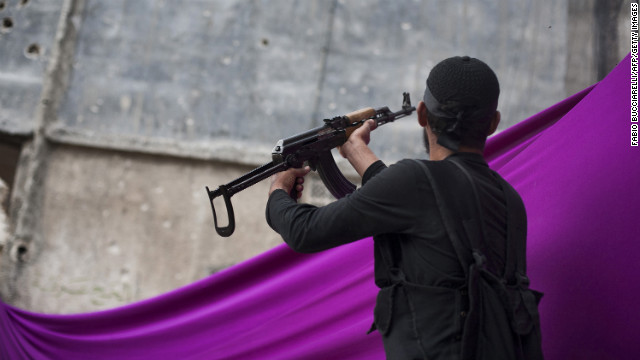 A Syrian rebel fires at an army position in the Karm al-Jabal district of Aleppo on October 22.
A Syrian rebel fires at an army position in the Karm al-Jabal district of Aleppo on October 22. 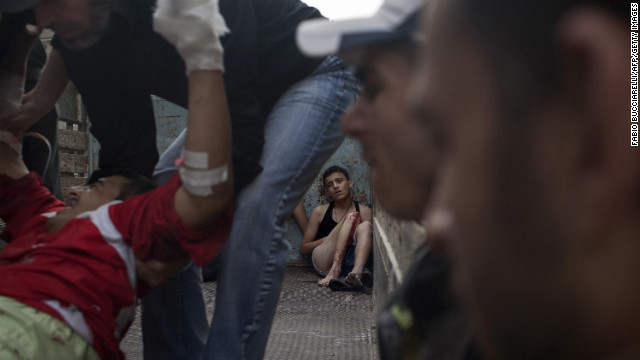 A wounded Syrian boy sits on the back of a truck carrying victims and wounded people to a hospital following an attack by regime forces in Aleppo on October 21.
A wounded Syrian boy sits on the back of a truck carrying victims and wounded people to a hospital following an attack by regime forces in Aleppo on October 21. 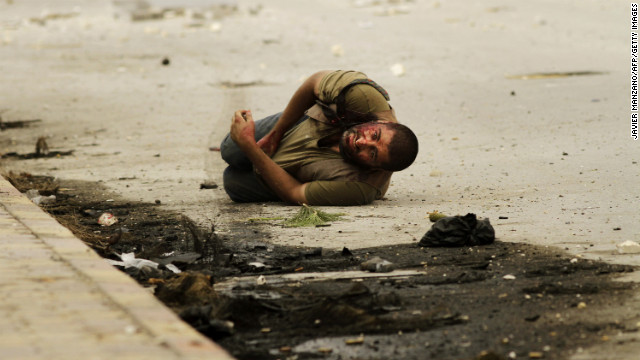 A man lies on the ground after being shot by a sniper for a second time as he waits to be rescued by members of the Al-Baraa Bin Malek Battalion, part of the Free Syria Army's Al-Fatah brigade, in Aleppo on October 20.
A man lies on the ground after being shot by a sniper for a second time as he waits to be rescued by members of the Al-Baraa Bin Malek Battalion, part of the Free Syria Army's Al-Fatah brigade, in Aleppo on October 20. 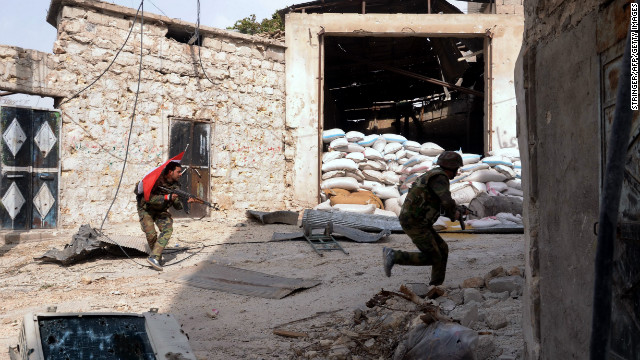 Syrian army soldiers run for cover during clashes with rebel fighters at Karam al-Jabal neighborhood of Aleppo on October 20.
Syrian army soldiers run for cover during clashes with rebel fighters at Karam al-Jabal neighborhood of Aleppo on October 20. 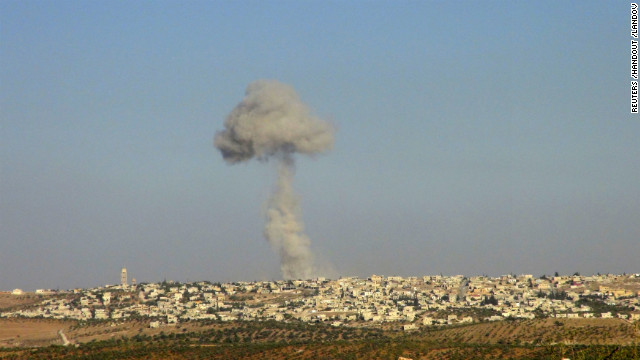 Smoke rises after a Syrian Air Force fighter jet fired missiles at the suburbs of the northern province of Idlib on October 16.
Smoke rises after a Syrian Air Force fighter jet fired missiles at the suburbs of the northern province of Idlib on October 16. 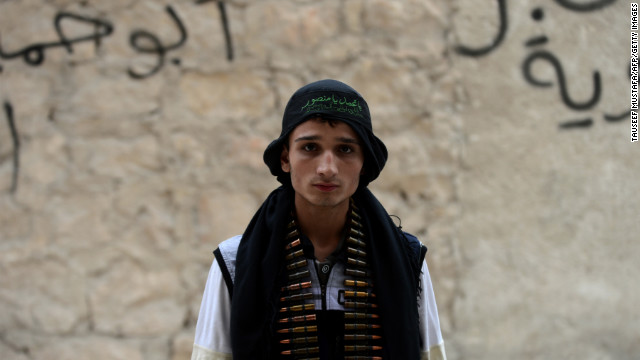 A Syrian opposition fighter stands near a post in Aleppo on October 11.
A Syrian opposition fighter stands near a post in Aleppo on October 11. 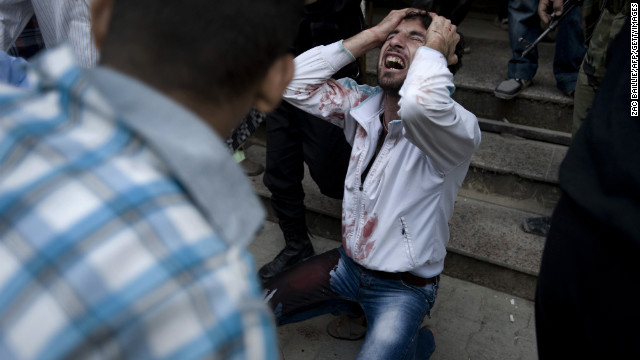 A Syrian man mourns the death of his father, who was killed during a government attack in Aleppo on October 10.
A Syrian man mourns the death of his father, who was killed during a government attack in Aleppo on October 10. 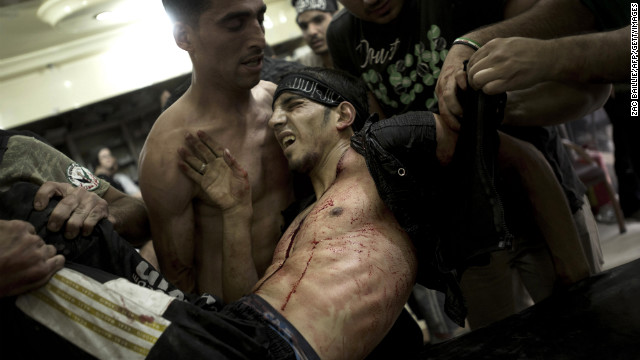 A rebel fighter is carried by his friends and laid on a gurney to be treated for gunshot wounds sustained during heavy battles with government forces in Aleppo on October 1.
A rebel fighter is carried by his friends and laid on a gurney to be treated for gunshot wounds sustained during heavy battles with government forces in Aleppo on October 1. 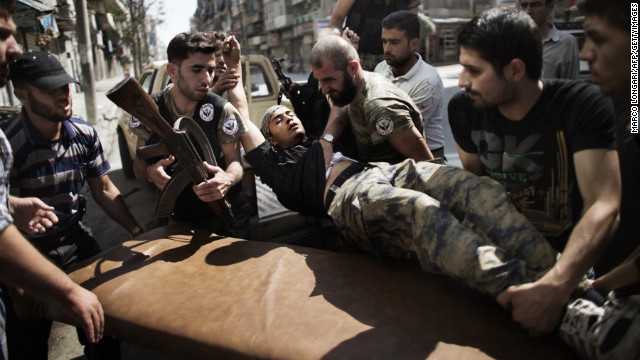 Syrian rebels help a wounded comrade to an Aleppo hospital after he was injured in a Syrian army strike on September 18.
Syrian rebels help a wounded comrade to an Aleppo hospital after he was injured in a Syrian army strike on September 18. 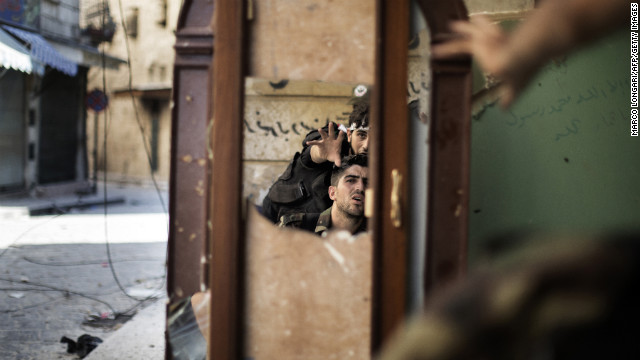 Free Syria Army fighters are reflected in a mirror they use to see a Syrian Army post only 50 meters away in Aleppo on September 16.
Free Syria Army fighters are reflected in a mirror they use to see a Syrian Army post only 50 meters away in Aleppo on September 16.  A Syrian man carrying grocery bags tries to dodge sniper fire as he runs through an alley near a checkpoint manned by the Free Syria Army in Aleppo on September 14.
A Syrian man carrying grocery bags tries to dodge sniper fire as he runs through an alley near a checkpoint manned by the Free Syria Army in Aleppo on September 14.  A woman walks past a destroyed building in Aleppo on September 13.
A woman walks past a destroyed building in Aleppo on September 13. 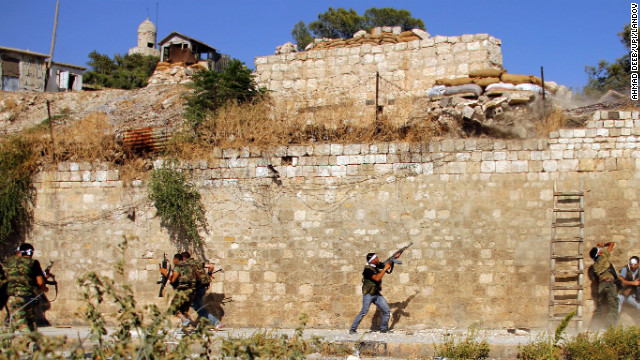 Free Syrian Army fighters battle during street fighting against Syrian army soldiers in Aleppo on September 8.
Free Syrian Army fighters battle during street fighting against Syrian army soldiers in Aleppo on September 8. 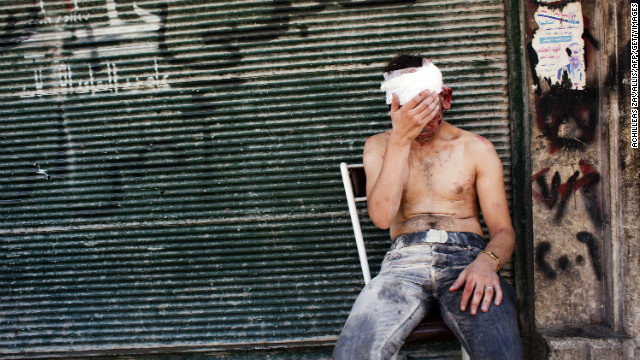 A Syrian man wounded by shelling sits on a chair outside a closed shop in Aleppo on September 4.
A Syrian man wounded by shelling sits on a chair outside a closed shop in Aleppo on September 4. 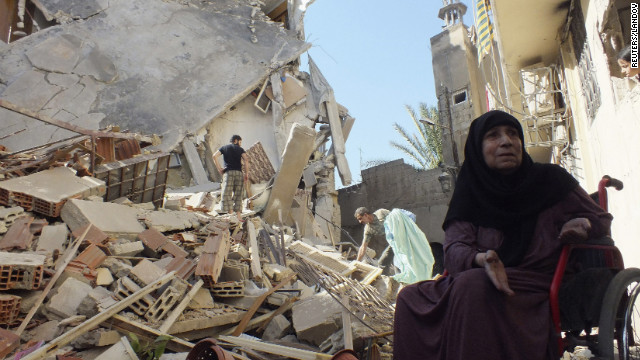 A woman sits in her wheelchair next to her house, damaged by a Syrian air raid, near Homs on August 26.
A woman sits in her wheelchair next to her house, damaged by a Syrian air raid, near Homs on August 26. 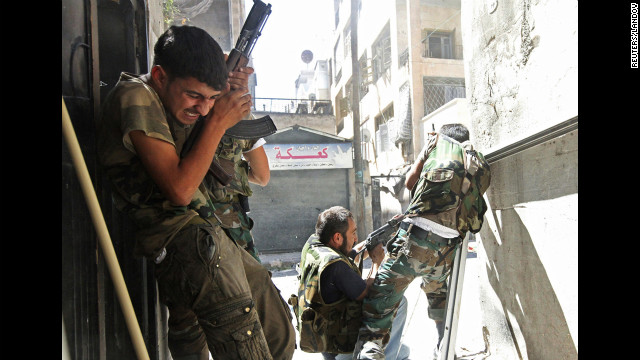 Members of the Free Syrian Army clash with Syrian army soliders in Aleppo's Saif al-Dawla district on August 22.
Members of the Free Syrian Army clash with Syrian army soliders in Aleppo's Saif al-Dawla district on August 22. 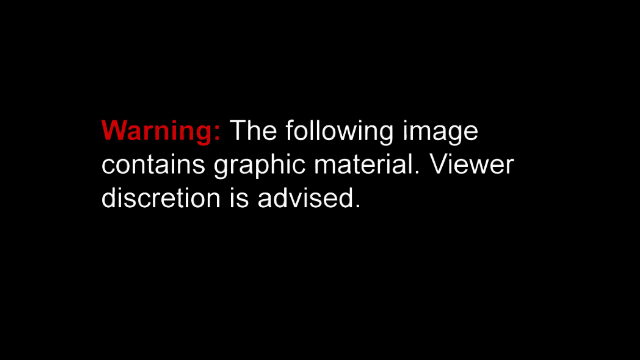
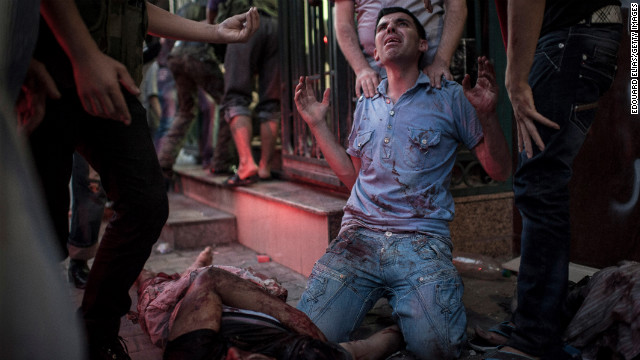 A man mourns in front of a field hospital on August 21 in Aleppo.
A man mourns in front of a field hospital on August 21 in Aleppo. 
 Wounded civilians wait in a field hospital after an air strike on August 21 in Aleppo.
Wounded civilians wait in a field hospital after an air strike on August 21 in Aleppo. 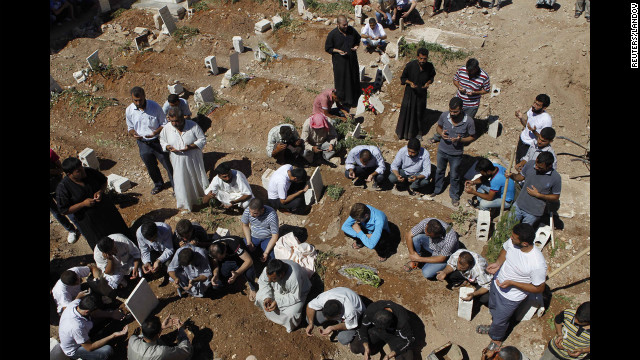 People pray during the funeral of a Free Syrian Army fighter, Amar Ali Amero, on August 21.
People pray during the funeral of a Free Syrian Army fighter, Amar Ali Amero, on August 21. 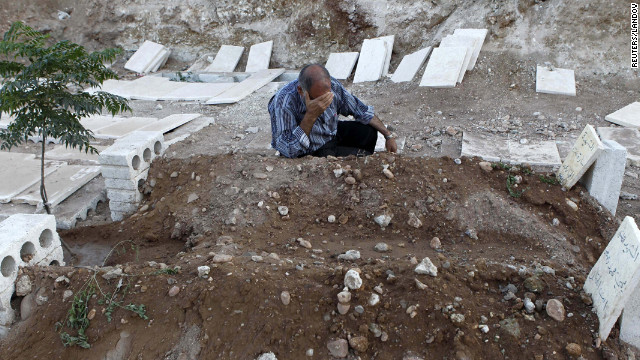 A man cries near the graves of his two children killed during a recent Syrian airstrike in Azaz on August 20.
A man cries near the graves of his two children killed during a recent Syrian airstrike in Azaz on August 20. 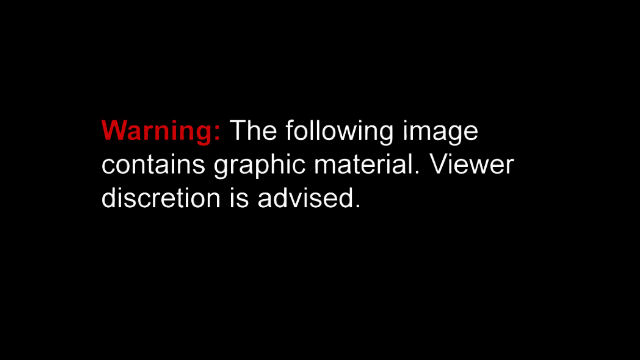
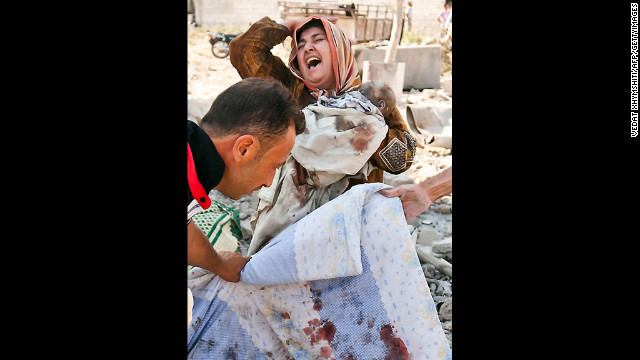 A Syrian woman holds her dead baby as she screams upon seeing her husband's body being covered following an airstrike by regime forces on the town of Azaz on August 15.
A Syrian woman holds her dead baby as she screams upon seeing her husband's body being covered following an airstrike by regime forces on the town of Azaz on August 15. 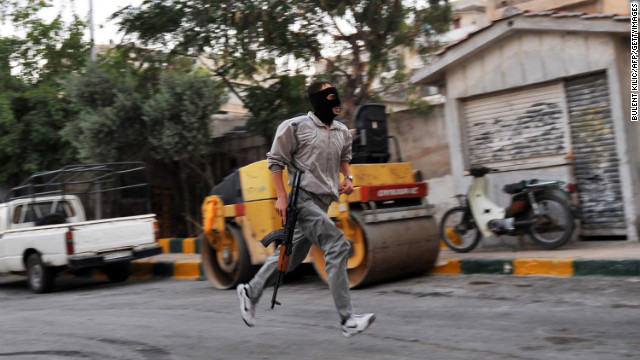 A Syrian rebel runs in a street of Selehattin during an attack on the municipal building on July 23.
A Syrian rebel runs in a street of Selehattin during an attack on the municipal building on July 23.  Syrian rebels hunt for snipers after attacking the municipality building in the city center of Selehattin on July 23.
Syrian rebels hunt for snipers after attacking the municipality building in the city center of Selehattin on July 23. 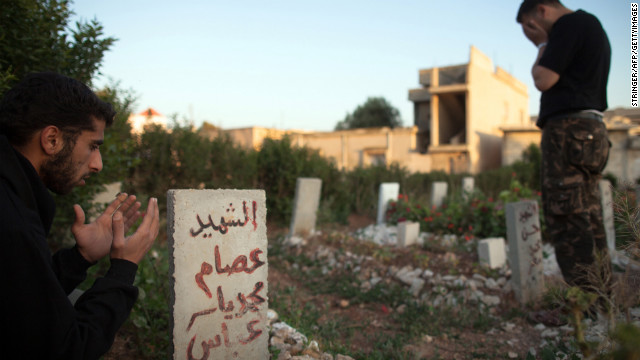 Members of the Free Syrian Army's Mugaweer (commandos) Brigade pay their respects in a cemetery on May 12 in Qusayr.
Members of the Free Syrian Army's Mugaweer (commandos) Brigade pay their respects in a cemetery on May 12 in Qusayr.  Syrian rebels take position near Qusayr on May 10.
Syrian rebels take position near Qusayr on May 10. 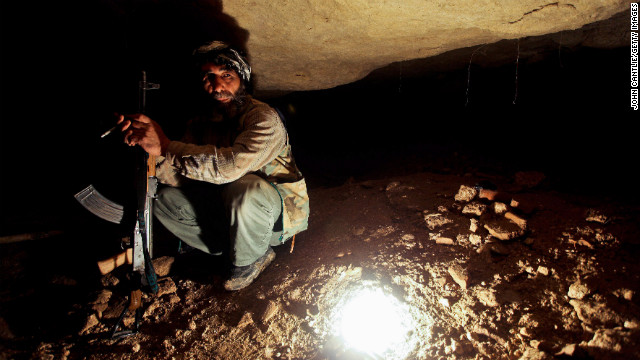 A Free Syrian Army member takes cover in underground caves in Sarmin on April 9.
A Free Syrian Army member takes cover in underground caves in Sarmin on April 9. 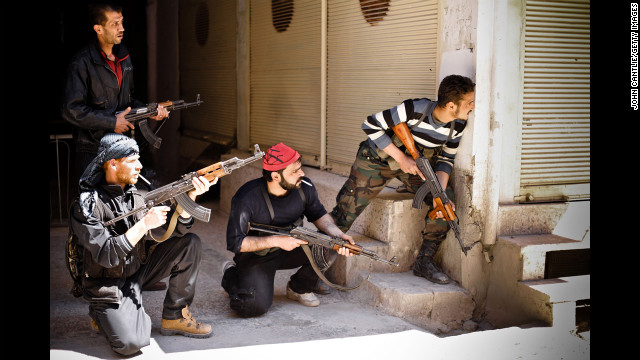 Rebels prepare to engage government tanks that advanced into Saraquib on April 9.
Rebels prepare to engage government tanks that advanced into Saraquib on April 9. 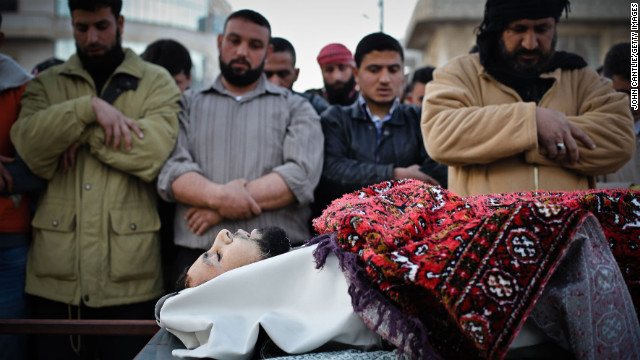 Men say prayers during a ceremony in Binnish on April 9.
Men say prayers during a ceremony in Binnish on April 9. 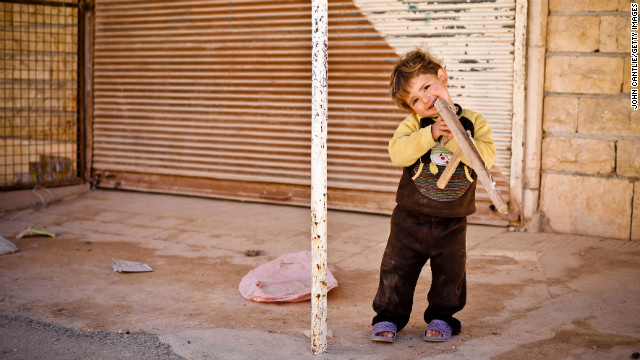 A young boy plays with a toy gun in Binnish on April 9.
A young boy plays with a toy gun in Binnish on April 9. 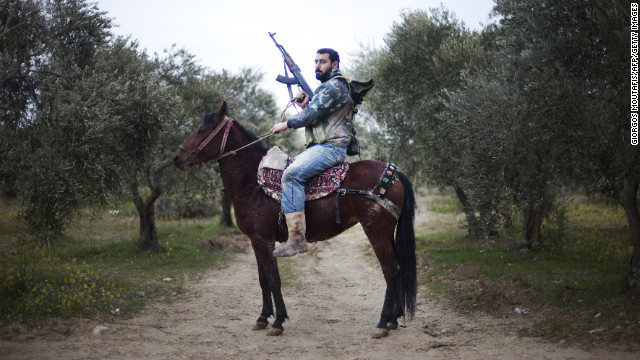 A Free Syrian Army rebel mounts his horse in the Al-Shatouria village near the Turkish border in northwestern Syria on March 16, a year after the uprising began.
A Free Syrian Army rebel mounts his horse in the Al-Shatouria village near the Turkish border in northwestern Syria on March 16, a year after the uprising began. 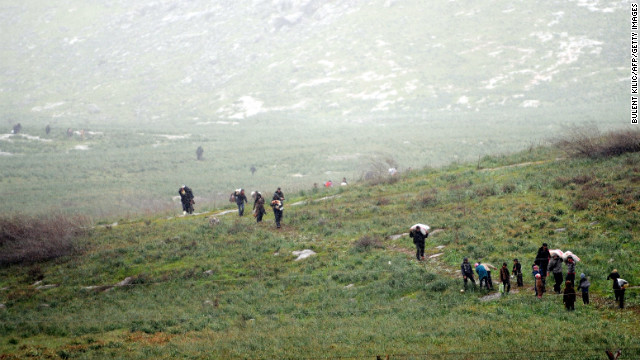 Syrian refugees walk across a field before crossing into Turkey on March 14.
Syrian refugees walk across a field before crossing into Turkey on March 14. 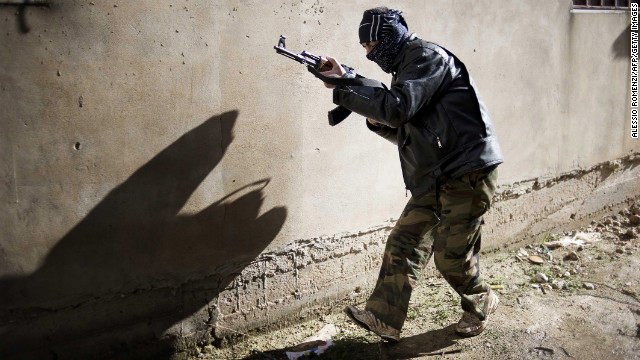 A rebel takes position in Al-Qsair on January 27.
A rebel takes position in Al-Qsair on January 27. 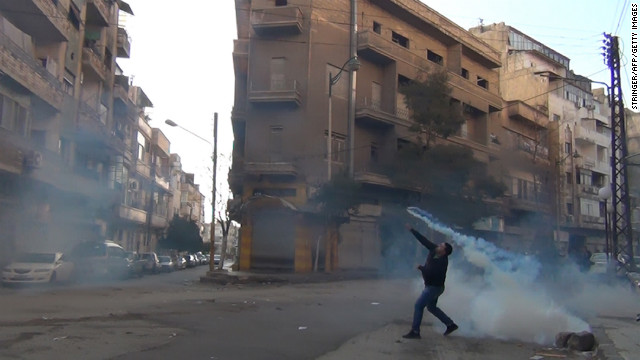 A protester in Homs throws a tear gas bomb back towards security forces, on December 27, 2011.
A protester in Homs throws a tear gas bomb back towards security forces, on December 27, 2011. 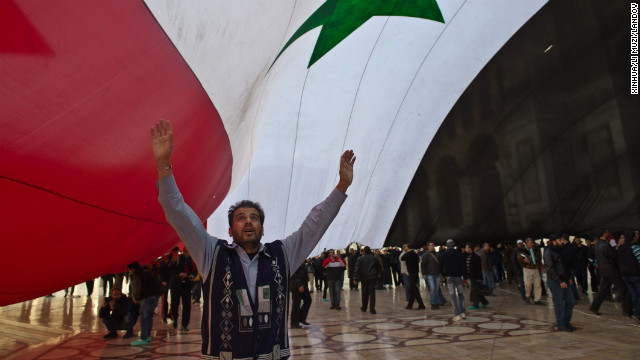 A man stands under a giant Syrian flag outside the Umayyad Mosque in Damascus on December 24, 2011.
A man stands under a giant Syrian flag outside the Umayyad Mosque in Damascus on December 24, 2011.  A member of the Free Syrian Army looks out over a valley in the village of Ain al-Baida on December 15, 2011.
A member of the Free Syrian Army looks out over a valley in the village of Ain al-Baida on December 15, 2011. 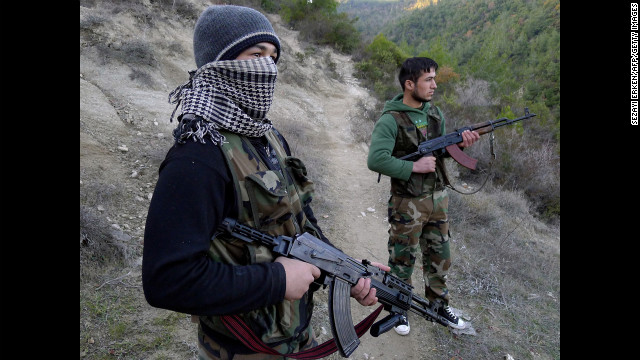 Members of the Free Syrian Army stand in an valley near the village of Ain al-Baida, close to the Turkish border, on December 15, 2011.
Members of the Free Syrian Army stand in an valley near the village of Ain al-Baida, close to the Turkish border, on December 15, 2011. 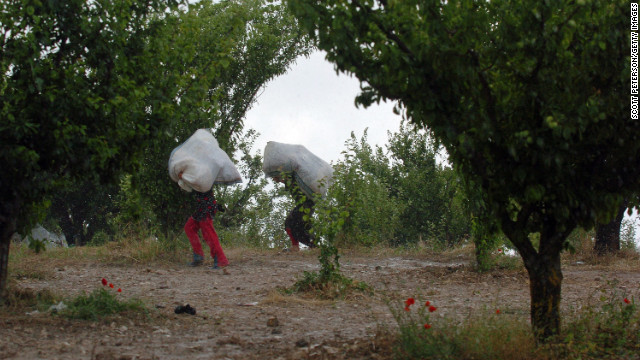 Displaced Syrian refugees walk through an orchard adjacent to Syria's northern border with Turkey on June 14, 2011, near Khirbet al-Jouz.
Displaced Syrian refugees walk through an orchard adjacent to Syria's northern border with Turkey on June 14, 2011, near Khirbet al-Jouz. 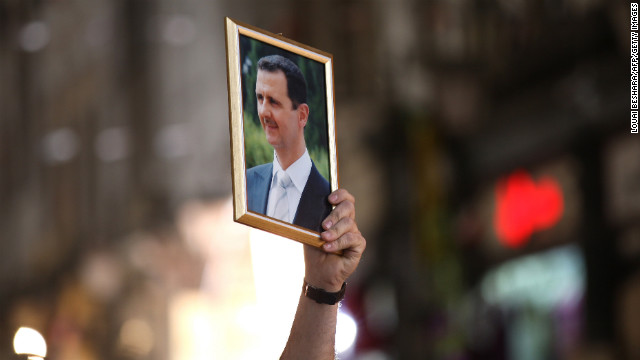 A Syrian man holds up a portrait of President Bashar al-Assad during a rally to show support for the president in Damascus on April 30, 2011.
A Syrian man holds up a portrait of President Bashar al-Assad during a rally to show support for the president in Damascus on April 30, 2011. 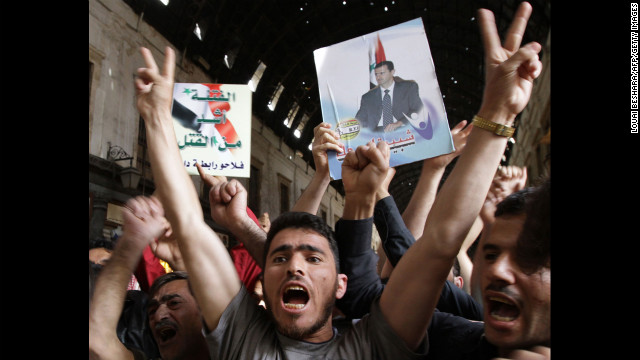 Syrians rally to show their support for President Bashar al-Assad in Damascus on April 30, 2011.
Syrians rally to show their support for President Bashar al-Assad in Damascus on April 30, 2011. 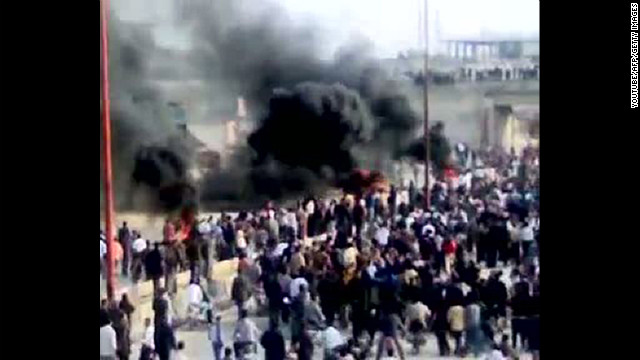 A screen grab from YouTube shows thick smoke rising above as Syrian anti-government protesters demonstrate in Moaret Al-Noman on April 29, 2011.
A screen grab from YouTube shows thick smoke rising above as Syrian anti-government protesters demonstrate in Moaret Al-Noman on April 29, 2011. 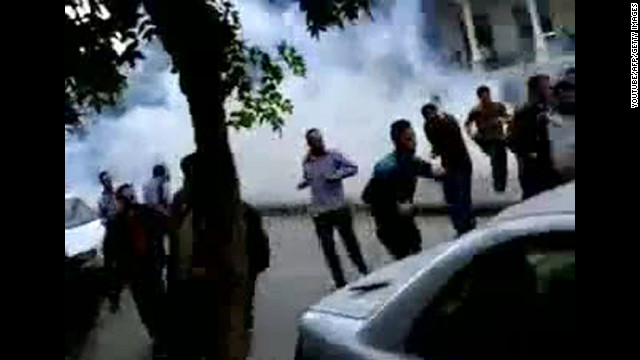 A screen grab from YouTube shows Syrian anti-government protesters run for cover from tear gas fired by security forces in Damascus on April 29, 2011, during the "Day of Rage" demonstrations called by activists to put pressure on al-Assad.
A screen grab from YouTube shows Syrian anti-government protesters run for cover from tear gas fired by security forces in Damascus on April 29, 2011, during the "Day of Rage" demonstrations called by activists to put pressure on al-Assad. 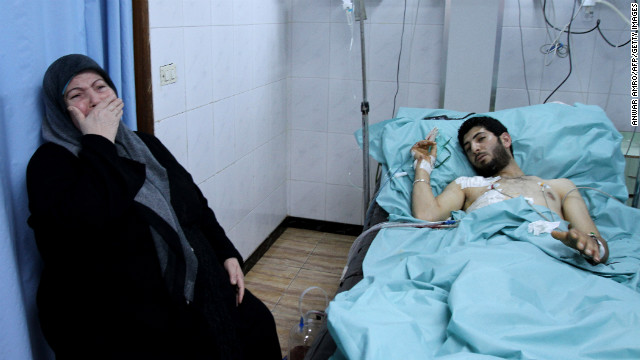 Syrians wave their national flag and hold portraits of al-Assad during a rally to show their support for their leader in Damascus on March 29, 2011.
Syrians wave their national flag and hold portraits of al-Assad during a rally to show their support for their leader in Damascus on March 29, 2011. 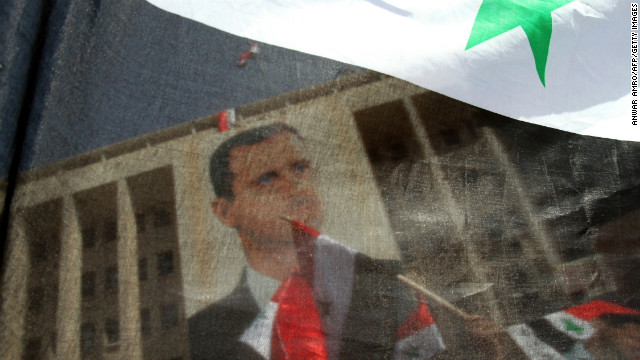 A woman sits by the hospital bed of a man allegedly injured when an armed group seized rooftops in Latakia on March 27, 2011, and opened fire at passers-by, citizens and security forces personnel according to official sources.
A woman sits by the hospital bed of a man allegedly injured when an armed group seized rooftops in Latakia on March 27, 2011, and opened fire at passers-by, citizens and security forces personnel according to official sources. 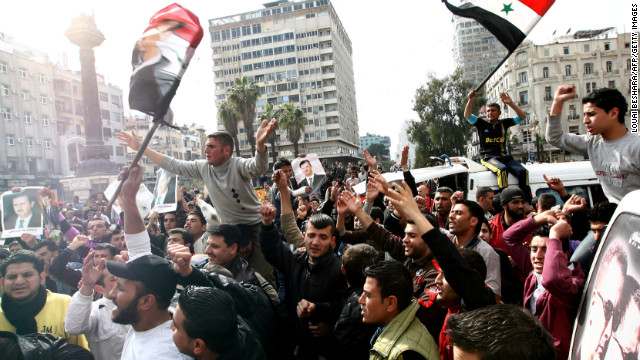 Syrian protesters chant slogans in support of al-Assad during a rally in Damascus on March 25, 2011.
Syrian protesters chant slogans in support of al-Assad during a rally in Damascus on March 25, 2011. 
1

2

3

4

5

6

7

8

9

10

11

12

13

14

15

16

17

18

19

20

21

22

23

24

25

26

27

28

29

30

31

32

33

34

35

36

37

38

39

40

41

42

43

44

45

46

47

48

49

50

51

52

53

54

55

56

57

58

59

60

61

62

63

64

65

66

67

68

69

70

71

72

73

74

75

76

77

78

79

80

81

82

83

84

85

86

87

88

89

90

91

92

93

94

95

96

97

98

99

100

101

102

103

104

105

106

107

108

109

110

111

112

113

114

115

116

117

118

119

120

121

122

123

124

125

126

127

128

129

130

131

132

133

134

135

136

137

138

139

140

141

142

143

144

145

146

147
- Anne-Marie Slaughter: Obama right to go to Congress about using force in Syria
- Slaughter: A world in which nations use chemical weapons with impunity is too dangerous
- She says striking Syria now will be a strike to protect the Syrian people, even if belated
- Slaughter: It's time for Congress to step up to its responsibility and support Obama
Editor's note: Anne-Marie Slaughter is president and CEO of the New America Foundation. She was director of policy planning in the U.S. State Department from 2009 to 2011.
(CNN) -- President Barack Obama has done the right thing by asking Congress to authorize the use of force against Syria to punish President Bashar al-Assad for using chemical weapons on his own people.
I say that even as someone who has been a sharp critic of the administration's Syria policy and an outspoken advocate of intervening in various ways to try to protect the millions of innocent Syrians whose lives are at risk, prevent the conflict from destabilizing the region and support members of the Syrian opposition who share our values.
The president, as he announced in May, is trying to steer this nation back to a world in which we are not permanently at war and we do not turn to our military as the weapon of first resort in any international crisis.
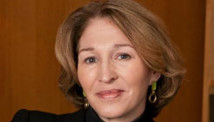
The Framers of our Constitution wanted to ensure that the decision to send our young men and women into battle could not be taken lightly. Both Democratic and Republican presidents have steadily chafed at those restraints over the course of the decades since World War II as traditional wars and formal declarations of war have faded away. George W. Bush's proclamation of a "war on terror," authorized by Congress, put this nation in a state of permanent emergency in which the commander in chief has had extraordinary powers.
That is unhealthy and dangerous for a democracy. A former constitutional law professor, Obama understands that although he has a limited reserve of power that could allow him to act alone, his power will be far greater with Congress. The constitutional framework is designed be a check in the best sense -- to require our leaders to make their case to the American people, to act on the basis of reasoned arguments about the nature of American interests that will stand up far beyond the White House Situation Room.
And the American people should back him on this decision, for three reasons.
First, we are protecting ourselves and our allies. We cannot afford to live in a world in which nations can use chemical weapons with impunity. The taboo against chemical weapons is particularly strong, for good reason. Dying by the breath we need to live holds a particular terror. The parents of the children whose shrouds we see could not protect them even with their own bodies, like human shields from a bullet or a bomb.
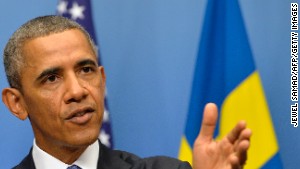 Obama:'I didn't set a red line'
Obama:'I didn't set a red line' 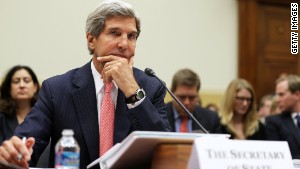 Kerry: Assad behind 'outrageous attack'
Kerry: Assad behind 'outrageous attack'  Activist: Airstrikes will not help us
Activist: Airstrikes will not help us The United States stood by when Iraq used chemical weapons first against Iran and later against its own people, to our shame. But we must not make that mistake again. Chemical weapons are the weapons of the weak against the strong, which is why al-Assad, has been driven to use them repeatedly, according to U.S. intelligence, when his back is against the wall, as it is now in Damascus. Should chemical weapons proliferate, they will be the weapons of choice for terrorists.
Second, striking Syria now will be a strike to protect the Syrian people, even if partial and belated. It will not end the massacres carried out with conventional weapons. But weapons of mass destruction are just that: weapons of mass destruction. A chemical attack that kills 1,000 today can kill 10,000 tomorrow and 100,000 the day after that.
Third, the president is asking us to do, as a nation, what a leader has to do. In his 2008 inaugural address, Obama called for a new era of responsibility in this country, "a recognition ... that we have duties to ourselves, our nation and the world." We have those duties not because the United States has some unique role or mission in the world, but because we are the world's most powerful nation. Other nations take their cues from our action or inaction, whether we want them to or not.
If we do not act, we are signaling that the world has suddenly become a far more permissive and dangerous place, that taboos can be broken, and that despite the pious words of the international community, leaders can do whatever they like within their own borders.
If we lead, other nations that take their responsibilities seriously as great powers will join us. A Russian veto may prevent the U.N. Security Council from authorizing our action in advance, but a majority of the members of the council will not vote to condemn the strikes after the fact.
It is now time for Congress to step up to its responsibility. The bargaining has already begun. But the use of force after the use of chemical weapons, with the world watching, is no place for partisan politics as usual.
Unless a clear majority of Congress opposes any action, it is incumbent on all those members who favor some use of force to craft a compromise that gives Obama the power to use both force and diplomacy as president and commander in chief to restore the chemical taboo and do whatever he can to reach a political settlement in Syria.
Follow us on Twitter @CNNOpinion.
Join us on Facebook/CNNOpinion.
The opinions expressed in this commentary are solely those of Anne-Marie Slaughter.







